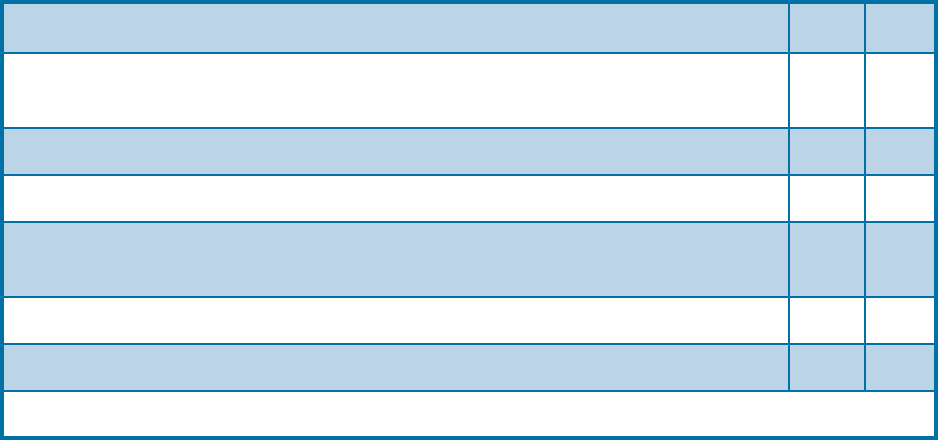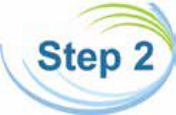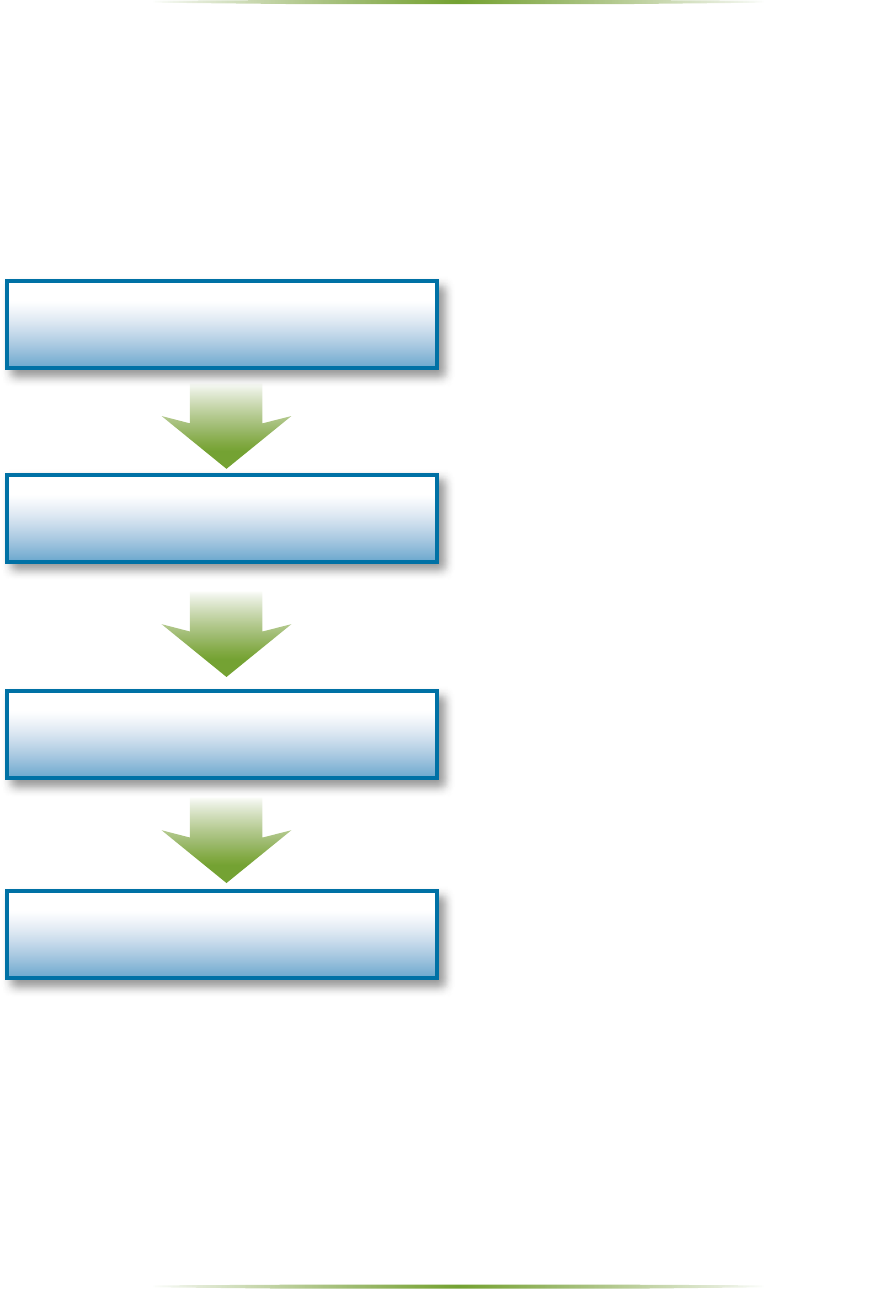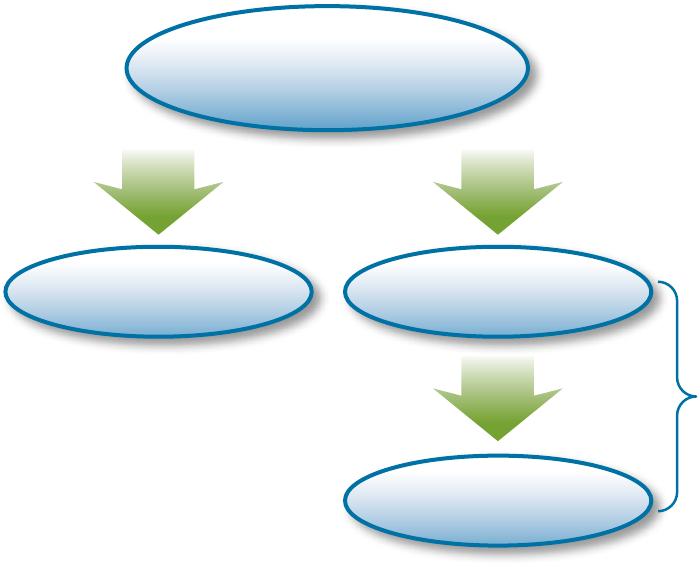
United StateS Office Of PerSOnnel ManageMent
Addressing and Resolving
Poor Performance:
A Guide for Supervisors
OPM.GOV MARCH 2017

Page i of ii
U.S. OFFICE OF PERSONNEL MANAGEMENT
Employee Services, Partnership & Labor Relations
Addressing and Resolving Poor Performance
Table of Contents
Table of Contents
Introducon ............................................................................................................................1
What Is the Purpose of This Guide? ....................................................................................................................... 1
How Should I Use This Guide? ................................................................................................................................ 1
Why Should I Address Poor Performance? ............................................................................................................ 2
What Can I Do To Prevent Poor Performance? ...................................................................................................... 4
Step One: Communicang Expectaons and Performance Problems .......................................5
Why Counsel an Employee? .................................................................................................................................. 5
What’s the Dierence Between Poor Performance and Misconduct? .................................................................. 5
How Can I Eecvely Counsel an Employee? ........................................................................................................ 5
Step One Checklist ................................................................................................................................................. 7
Q&A Step One Quesons and Answers ................................................................................................................. 8
Counseling Employees About Performance Problems ........................................................................................ 10
Preparing for a Counseling Session ...................................................................................................................... 10
Conducng the Counseling Session ..................................................................................................................... 11
Step Two: Providing an Opportunity To Improve ...................................................................13
Providing an Opportunity To Improve .................................................................................................................. 13
The Opportunity Period ....................................................................................................................................... 13
Special Consideraons ........................................................................................................................................ 15
Requests for Accommodaons ............................................................................................................................ 15
Requests for Leave ............................................................................................................................................... 16
Deciding What Comes Next .................................................................................................................................. 17
No Improvement During Opportunity Period ...................................................................................................... 17
Step Two Checklist................................................................................................................................................ 19
Q&A Step Two Quesons and Answers ............................................................................................................... 20
Step Three: Taking Acon ...................................................................................................... 23
Taking Acon ........................................................................................................................................................ 23
A Supervisor’s Authority ...................................................................................................................................... 23
Figure A. Elements of a Part 432 Acon ............................................................................................................... 24
Figure B. Elements of a Part 752 Acon ............................................................................................................... 24
Figure C. Comparison of Part 432 vs. Part 752 ..................................................................................................... 25
Appeal Rights ....................................................................................................................................................... 27
Step Three Checklist ............................................................................................................................................. 29
Q&A Step Three Quesons and Answers ............................................................................................................ 30
Special Topics ........................................................................................................................33
The Probaonary/Trial Period .............................................................................................................................. 33
Within-Grade Increase Denials ............................................................................................................................. 34
Special Topics: Key Points To Remember .............................................................................................................. 35
Probaonary Employees ...................................................................................................................................... 35
Within-Grade Increases ........................................................................................................................................ 36
Q&A Special Topics: Quesons and Answers ...................................................................................................... 37
Appendix ...............................................................................................................................39
Contents ............................................................................................................................................................... 39
Sample Memorandum of Counseling: Example #1 .............................................................................................. 41
Sample Memorandum of Counseling: Example #2 .............................................................................................. 42
Sample Opportunity Noce: Example #1 ............................................................................................................. 43
Sample Opportunity Noce: Example #2 ............................................................................................................. 47
Sample Proposal Noce ....................................................................................................................................... 52
Sample Decision Noce ........................................................................................................................................ 56

Page ii of ii
Addressing and Resolving Poor Performance
Table of Contents
U.S. OFFICE OF PERSONNEL MANAGEMENT
Employee Services, Partnership & Labor Relations
This page intenonally le blank.

Page 1 of 60
U.S. OFFICE OF PERSONNEL MANAGEMENT
Employee Services, Partnership & Labor Relations
Addressing and Resolving Poor Performance
Introduction
Introduction
What Is the Purpose of This Guide?
Federal employees work hard to make their agencies successful in carrying out their mission
and strive to ensure that American taxpayers obtain the best from their Government. However,
at mes Federal supervisors are faced with employees whose performance is not acceptable.
The purpose of this Guide is to help you address and resolve poor performance. This guidance
should be used in concert with the technical advice you receive from your agency’s human
resources sta. You should also be aware that most agencies have specic procedures and
requirements that must be followed, whether they are part of a negoated bargaining
agreement or other internal agency regulaon.
How Should I Use This Guide?
Addressing and resolving poor performance is a three-step process. These three steps are:
Communicating Expectations and Performance Problems
Providing an Opportunity To Improve
Taking Action
This Guide is organized accordingly into three secons. At the end of each secon, you will
nd a checklist as well as answers to commonly asked quesons. In the appendix, you will nd
samples of documents that can be used throughout this process.

Page 2 of 60
Addressing and Resolving Poor Performance
Introduction
U.S. OFFICE OF PERSONNEL MANAGEMENT
Employee Services, Partnership & Labor Relations
Why Should I Address Poor Performance?
Dealing with performance problems can be a real challenge for any supervisor. Experienced
supervisors oen say it is one of the toughest, but also one of the most important, parts of their
jobs. It is a key supervisory responsibility, and failure to address poor performance can have a
greater impact than you may appreciate. Let’s briey discuss some of the reasons supervisors
oen give for not addressing poor performance.
Dealing with poor
performance can be time
consuming. My time is bet-
ter spent supervising my
productive employees.
While dealing with poor performance can
be me consuming, failing to address poor
performance sends a clear message to other
employees that you have dierent standards
for poor performers and that they don’t have to
meet your performance expectaons. With sta
cutbacks, it is crical that all employees produce.
In the end, not taking the me to deal with the
situaon now may cost you more me in the long
run. Usually, poor performance only gets worse
over me—rarely does it correct itself without
acon on the part of the supervisor.
If I take action against one
employee, it will lower
morale among other
employees and create a
less productive work
environment.
Actually, taking such acon can have just the
opposite eect. Most employees want and
expect to be held accountable for their work and
resent it when others do not “pull their weight.”
Building a producve team begins by seng
clear expectaons with its individual members
and addressing with them any failure to meet
those expectaons.

Page 3 of 60
U.S. OFFICE OF PERSONNEL MANAGEMENT
Employee Services, Partnership & Labor Relations
Addressing and Resolving Poor Performance
Introduction
Telling employees that
they are not performing
satisfactorily is unpleasant
and requires special
human relation skills.
Very few individuals enjoy cricizing others.
As a result, most employees receive lile or
no correcve feedback from their supervisors.
Construcve counseling given early and
regularly most oen leads to performance
improvement and also eliminates the need to
consider more formal acon that can be even
more unpleasant. Providing such counseling
does not require special skills. There are several
points to remember, however, and they will be
discussed in the next secon.
The procedural steps
involved in addressing
poor performance
are complex and
highly technical.
Many performance problems can be addressed
prior to undertaking any formal acon. Further-
more, the procedural steps are actually fairly
straighorward and not that complicated. Those
steps will be described later in this Guide.
If I do take a formal
performance-based action,
it is likely to be
appealed and
ultimately overturned.
Most performance-based acons are not
appealed and, when they are, the overwhelming
majority of them are sustained upon appeal to
the Merit Systems Protecon Board.
Upper management
will not support me
if I take action to address
poor performance.
The same reasons it makes sense for you to
address an employee’s poor performance should
also make sense to your supervisor. Share this
Guide with your supervisor!

Page 4 of 60
Addressing and Resolving Poor Performance
Introduction
U.S. OFFICE OF PERSONNEL MANAGEMENT
Employee Services, Partnership & Labor Relations
What Can I Do To Prevent Poor Performance?
The focus of this Guide is on helping you address and resolve poor performance. The best
way for supervisors to handle poor performance issues is to take acon to avoid performance
problems before they occur. Such prevenve acons include:
• Communicate clear performance standards and expectaons to employees.
(Consider sharing your supervisor’s performance expectaons with your sta.)
If your employees don’t understand what is expected, it will be very hard, if not
impossible, for them to meet those expectaons. Providing clear expectaons
doesn’t necessarily require you to lay out precisely wrien, detailed instrucons
on every performance component. Generally, the queson you should ask yourself
is: “Would a reasonable person understand what was expected?”
• Provide regular and frequent feedback on performance.
Such feedback, both posive and correcve, whether given in regularly scheduled
meengs or in unscheduled discussions, is crucial to ensuring that expectaons are
understood. Frequent feedback lessens the likelihood that an employee will be
surprised if it becomes necessary to take formal steps to resolve poor performance.
Always look for opportunies to conrm that your employees understand what
is expected.
• Reward and recognizing good performance, informally and formally.
Recognizing good performance is simply another way of clarifying expectaons.
Recognizing good performance also increases the likelihood that good performance
will connue.
• Make full use of the probaonary period for new employees.
The importance of the probaonary or trial period is discussed in more detail in
the “Special Topics” secon of this Guide. Performance problems oen rst show up
during the inial period of Government employment. This period is designed to provide
an opportunity for management to address such problems in an expedient manner.
Furthermore, an employee who is terminated during this period is not entled to most
of the procedures and appeal rights granted to employees who have completed
probaonary/trial periods.
A recurring theme in successful resoluon of performance problems is that taking acon
early is always beer than waing. This is denitely true when considering ways to prevent
performance problems. Early communicaon, early feedback (posive and correcve), and,
if appropriate, early terminaon during a probaonary or trial period are all good ways to
prevent future performance problems. Invesng me early is always me well spent.

Page 5 of 60
U.S. OFFICE OF PERSONNEL MANAGEMENT
Employee Services, Partnership & Labor Relations
Addressing and Resolving Poor Performance
Step One: Communicating Expectations and Performance Problems
Step One: Communicating Expectations and Performance Problems
Why Counsel an Employee?
Most performance problems can be resolved through eecve communicaon between
supervisors and their employees. A counseling session is an opportunity to review and clarify
expectaons, and discuss performance problems. This step will provide advice on preparing
for and conducng counseling sessions.
What’s the Difference Between Poor Performance and Misconduct?
It is important that you rst make sure you are faced with poor performance rather than
misconduct. The dierence between poor performance and misconduct is explained below.
Misconduct is generally a failure to follow a workplace rule (whether wrien or unwrien).
Examples of misconduct include tardiness and absenteeism, insubordinaon, and falsicaon.
Poor performance, on the other hand, is simply the failure of an employee to do the job at
an acceptable level. The acceptable level should be documented in the employee’s wrien
performance standards and is typically described in terms of quality, quanty, or meliness.
Although it is normal for performance and misconduct to be interrelated, it is important to
recognize the dierence between the two. This Guide is designed to help you address and
resolve problems that are primarily performance based rather than misconduct related.
How Can I Effectively Counsel an Employee?
Despite prevenve steps taken to avoid poor performance, you may nd an employee’s
performance is not meeng your expectaons. The best approach is to meet with the
employee to discuss the performance problem. The focus of this discussion should be to
tell the employee exactly what must be done to bring performance up to an acceptable level,
both by providing specic examples of poor performance and also suggesng ways that
performance can be improved.
It is crical that you review the employee’s performance standards to ensure they clearly
convey what needs to be done in the job. Your human resources sta can assist you in this
review. Be sure to ask the employee if he or she understands precisely what must be done
to bring performance to an acceptable level.

Page 6 of 60
Addressing and Resolving Poor Performance
Step One: Communicating Expectations and Performance Problems
U.S. OFFICE OF PERSONNEL MANAGEMENT
Employee Services, Partnership & Labor Relations
At mes, you will need the assistance of the Employee Assistance Program (EAP) that is
available to provide counseling for physical or mental condions, or other personal problems.
It’s a smart idea to know the name of the EAP specialist in your organizaon and to make sure
you understand the services oered through the EAP and how to refer an employee. By doing
so, you are prepared to respond if employees raise personal problems that are impacng
their work.
Topics Discussed During Counseling Session
3 Your Expectaons
3 The Employee’s Performance Standards
3 Crical Element(s) Where the Employee Is Failing
3 What the Employee Must Do To Bring Performance to an Acceptable Level
Eecve Counseling Tips
• Before counseling, make sure you can clearly describe acceptable performance.
• Conduct the counseling session in a private place.
• Arrange adequate me for your comments as well as comments from the employee.
• Clearly state performance expectaons and seek conrmaon that the employee
understands those expectaons.
• Focus on the poor performance, not on personalies or other distracons.
• Always maintain a construcve tone, along with a calm and professional demeanor.
• Seek cooperaon, NOT confrontaon.
• Remember that your goal is to improve the employee’s performance, not to win an
argument with the employee.
• End the session on a posive note by emphasizing that your mutual goal is improving
the employee’s performance.
Note: A more detailed discussion on how to prepare for and conduct a counseling session is provided at the end of
this secon.

Page 7 of 60
U.S. OFFICE OF PERSONNEL MANAGEMENT
Employee Services, Partnership & Labor Relations
Addressing and Resolving Poor Performance
Step One: Communicating Expectations and Performance Problems
Step One Checklist
Use the following checklist to make sure that you have completed all the acons related
to Step One.
Step One Checklist Yes No
Are you sure the issue is primarily a performance problem
(as opposed to misconduct)?
Have you communicated performance standards to the employee?
Are the standards clear and reasonable?
Have you asked the human resources sta to review the standards for
any possible problems?
Have you told the employee what crical elements he or she is failing?
Have you counseled the employee on how to improve to an acceptable level?
Let the employee know whether or not performance is improving!

Page 8 of 60
Addressing and Resolving Poor Performance
Step One: Communicating Expectations and Performance Problems
U.S. OFFICE OF PERSONNEL MANAGEMENT
Employee Services, Partnership & Labor Relations
Q
Q
A
A
Q
Q
A
A
Q
Q
A
A
Q&A Step One Questions and Answers
Queson: Do I have the authority to tell an employee that his or her performance
is unacceptable?
Answer: Yes. More than that, as the employee’s supervisor and “rang ocial,” it is your
responsibility to keep an employee informed about your assessment of his or her
performance, parcularly when you have concerns. Within your agency, there
may be a policy or pracce you must follow when you nofy an employee that
his or her performance has become unacceptable. You should contact your
human resources oce for further informaon.
Queson: Do I have to wait for the annual performance appraisal to tell an employee that
his or her performance is unacceptable?
Answer: No, you should not wait. In fact, good managers provide their employees with
performance feedback throughout the appraisal cycle. The Oce of Personnel
Management reinforces this in its regulaons where it states that employees
need to be noed of unacceptable performance “at any me during the
performance appraisal cycle that an employee’s performance is determined to
be unacceptable.” Noce also that the Government-wide regulaons only call
for a determinaon, not a formal rang of record. Check with your agency on
your internal policy regarding whether or not a full performance rang needs
to be prepared before you inform an employee of unacceptable performance.
Remember, regardless of whatever agency requirements apply, no employee
likes to feel “sandbagged” at appraisal me, so address the poor performance
as soon as you become aware of it.
Queson: Should my employee get a copy of all my notes about his or her performance?
Answer: As a general rule, you should give your employee a copy of the notes from a
discussion or meeng that pertains to your expectaons and responsibilies
as well as the employee’s responsibilies. It is expected that you may take
“supervisory” notes to serve as “memory joggers” regarding the employee’s
performance. For example, these notes can include dates or the number of mes
an employee was given an instrucon. This type of “supervisory” informaon
does not have to be included in the notes given to the employee. Contact your
agency’s legal counsel or human resources sta for informaon on Privacy Act
requirements concerning supervisory notes.

Page 9 of 60
U.S. OFFICE OF PERSONNEL MANAGEMENT
Employee Services, Partnership & Labor Relations
Addressing and Resolving Poor Performance
Step One: Communicating Expectations and Performance Problems
Q
Q
A
A
Q
Q
A
A
Queson: I’ve never had to counsel an employee before. What kind of informaon is
worth pung into “supervisory” notes?
Answer: One of the most important things to remember in taking notes is to date them so
they reect when you met with an employee or when you noted a parcularly
good or unacceptable instance of performance. Keep track of specic examples
of poor performance on work assignments. Doing so will make it easier for you
to explain deciencies in the employee’s performance through the use of
examples. Note how you expressed your performance expectaons and how
the employee responded to the counseling. Once an opportunity period (see
Step Two for an explanaon of an opportunity period) has begun, you will need
to make notes of all roune meengs with the employee. In addion, you may
need to keep a record of when assignments were given to the employee and
what instrucons were provided.
Queson: This person is the rst employee with “unacceptable performance” I’ve ever had
in our group. When I looked at the performance standards, I found out that he
isn’t even doing the work described in them. What now?
Answer: Your rst step always should be to convey a clear message to the employee
about your expectaons regarding performance. Performance standards that
do not relate to the job need to be rewrien so there will be no confusion
between your oral instrucons or wrien guidance and the performance
standards themselves. If the new standards that you have wrien are
substanally dierent from the old ones, you will need to give the employee a
chance to work under the new standards before you determine whether or not
the employee’s performance is unacceptable. As discussed later in Step Three,
you do not always need to rely on formal performance standards, depending on
the legal authority under which you take acon. But you run a serious risk of
either having your acon overturned or migated upon appeal if the employee
can demonstrate that his or her performance expectaons were not clear.

Page 10 of 60
Addressing and Resolving Poor Performance
Step One: Communicating Expectations and Performance Problems
U.S. OFFICE OF PERSONNEL MANAGEMENT
Employee Services, Partnership & Labor Relations
Counseling Employees About Performance Problems
Addional guidance is presented below on preparing for and conducng counseling sessions.
Preparing for a Counseling Session
(1) Once you recognize that a performance problem exists, review what guidance the
employee has been given on performance. Oen, that guidance exists only in
performance standards that were issued early on. But you may also have some
applicable operang manuals or guides, so take a look at everything.
(2) Read the performance standards. If they don’t really describe what you want from the
employee, take the me to x them. If your organizaon uses generic standards that
cannot be modied, think through the types of things that you will say to the employee
to further explain what it is you expect. Write these notes down.
(3) Even though you may never need to go any further than an oral counseling session to get
the employee to improve, take the me to contact the human resources oce and nd out
what your technical advisor would say if you do need to take formal acon later. Ask that
specialist to review the performance standards to ensure that there aren’t any problems
with them.
(4) If you do have operang manuals, guides, or other tools that all employees use, take a look
at them and see how these could be used to help the employee improve. Try to read them
as objecvely as possible to look for areas that may not be clear. Remember, you know this
job (probably beer than almost everybody else), but there is some part of the job that is
not making sense or becoming clear to this employee. If you have to, break it down into
parts and explain it from the boom up.
(5) Remember your goal is to improve the employee’s performance, not to win an argument
with the employee. To prepare for a counseling session with an employee, write out
and then pracce saying what acceptable performance in the job looks like. Listen to
yourself. If it doesn’t make any sense to you, it won’t make any sense to the employee.
Be as specic as possible.
(6) Have some specic examples of poor performance in your mind (or your notes) so that
you can respond to the inevitable, “What do you mean?” Do not emphasize past poor
performance, though; instead, seek to clarify and encourage future good performance.
Page 11 of 60
U.S. OFFICE OF PERSONNEL MANAGEMENT
Employee Services, Partnership & Labor Relations
Addressing and Resolving Poor Performance
Step One: Communicating Expectations and Performance Problems
Conducting the Counseling Session
(1) In scheduling a meeng to discuss a performance issue, make sure you allow adequate me
for your comments and any feedback from the employee. Conduct the meeng in a private
place where the conversaon will not be overheard by coworkers.
(2) Choose your me based on your knowledge of the employee. Is this someone who needs
to have a meeng like this on Friday so he or she can sort things out over the weekend?
Or is this a person who will feel like you are dumping on him or her and then leaving no
opportunity to respond for 2 days? Use the same thought process for deciding how
informaon is best given. Although you will be meeng to have a discussion, would this
employee like to read through some wrien notes before talking? Would a verbal
discussion with a commitment to follow up with something in wring be more in the style
of the employee?
(3) Set and maintain a construcve tone: be calm, professional, and focused.
(4) Seek cooperaon, not confrontaon, by focusing on how the employee’s performance ts
into the performance of the total organizaon.
(5) Choose several points throughout your comments where you can stop and get conrmaon
from the employee that he or she understands the problems and your expectaons.
Providing opportunies for him or her to respond will allow the employee to be acve in
the discussion and may lessen the negave connotaon of a “lecture” being given.
(6) At the conclusion of the meeng, end on a posive note by emphasizing that improving the
employee’s performance is a mutually benecial goal. Oer a wrien summary then or to
be given to the employee later. Having a wrien summary is parcularly valuable if you will
be trying something new or changing any work assignment roune.
(7) Keep notes for yourself documenng the date of the discussion and any specic agreements
you reached with the employee regarding changes to the way work is assigned or
structured.
(8) Follow up! If the employee shows improvement, let him or her know it immediately! If the
employee appears to be sll struggling, go back and talk again.

Page 12 of 60
Addressing and Resolving Poor Performance
Step One: Communicating Expectations and Performance Problems
U.S. OFFICE OF PERSONNEL MANAGEMENT
Employee Services, Partnership & Labor Relations
This page intenonally le blank.

Page 13 of 60
U.S. OFFICE OF PERSONNEL MANAGEMENT
Employee Services, Partnership & Labor Relations
Addressing and Resolving Poor Performance
Step Two: Providing an Opportunity To Improve
Step Two: Providing an Opportunity To Improve
Providing an Opportunity To Improve
Before you even begin the formal process of taking a performance-based acon, be aware
that you have certain opons. The law provides for two dierent processes for taking
performance-based acons. If a performance-based acon is taken under Title 5 CFR Part 432,
a formal opportunity to improve is required. If a performance-based acon is taken under Title
5 CFR Part 752, an opportunity period is not required. Step Two will walk you through the Part
432 process of giving an employee a formal opportunity to improve his or her performance.
(Step Three will provide more details on deciding under which process to take your acon.)
Regardless of the process you use, an opportunity period is a useful tool for assisng
employees in improving their performance.
The Opportunity Period
In most cases, the informal steps you take with employees, such as the counseling described
previously in Step One, will prove very eecve in your eorts to avoid or resolve poor
performance. However, if an employee is sll working at an unacceptable level in one or
more crical elements, you will need to give the employee a formal opportunity to improve
his or her performance.
Over the years, agencies have developed dierent mechanisms for providing employees with a
formal opportunity to improve unacceptable performance. Many agencies have adopted the
use of the Performance Improvement Plan, oen referred to as a “PIP.” In this Guide, we will
use the term “opportunity period” as a generic reference to a formal period for improving
unacceptable performance.
This period is designed to give the employee an opportunity to bring his or her performance
up to an acceptable level. It is also the supervisor’s opportunity to clearly express his or her
expectaons and the consequences of not meeng those expectaons. If the employee
fails to improve to an acceptable level by the end of the opportunity period, further acon is
warranted.
Under the current regulaons for performance appraisal (5 CFR Part 430), there are three types
of performance elements: crical, non-crical, and addional. But remember, you can only
remove or demote an employee for unacceptable performance in a crical element.

Page 14 of 60
Addressing and Resolving Poor Performance
Step Two: Providing an Opportunity To Improve
U.S. OFFICE OF PERSONNEL MANAGEMENT
Employee Services, Partnership & Labor Relations
Depending on the nature of the job and the employee’s experience, it may be appropriate to
oer assistance in a variety of ways. For example, an employee may be given a checklist, paired
with another employee, oered training, and/or given closer supervision. Not every employee
will require every type of assistance, but once assistance is oered, be sure to follow through
with it in the opportunity period. The procedures for providing a formal opportunity to
improve are:
Determination of Unacceptable
Performance
Employee’s performance is determined to be
unacceptable in one or more crical elements.
“Opportunity Period”
Notice Issued
Inform the employee in wring of the crical
element(s) in which he or she is failing, what
is needed to bring performance up to an
acceptable level, what assistance will be
provided, and the consequences of failing
to improve during the opportunity period.
(See sample noce in the Appendix.)
Formal Opportunity
to Improve
Employee must bring performance up to an
acceptable level in failed crical element(s).
Duraon of opportunity period may vary.
Be sure to document the employee’s progress
and to provide any appropriate assistance.
Determination of
Performance Improvement
Consider the evidence of performance and
compare with standards and expectaons
outlined in the opportunity period noce.
Hopefully, an employee will improve and maintain acceptable performance. However, if an
employee fails to perform acceptably by the end of the opportunity period or improves but
then fails again in the same crical element within 1 year from the start of the opportunity
period, the supervisor may demote or remove the employee without going through another
opportunity period.
Page 15 of 60
U.S. OFFICE OF PERSONNEL MANAGEMENT
Employee Services, Partnership & Labor Relations
Addressing and Resolving Poor Performance
Step Two: Providing an Opportunity To Improve
Special Considerations
In reality, performance-based acons do not always run as smoothly as the procedures just
described. Some issues may occur that deserve special consideraon.
Requests for Accommodations
When counseling, providing an opportunity period, or taking acon, you may discover that a
performance problem is due to a mental or physical condion. As a result, an employee may
request some type of accommodaon. Not everyone with a medical condion is protected by
the law. In order to be protected, a person must be qualied for the job and have a disability
as dened by the law. In this type of situaon, you will want to get technical assistance from
your agency’s human resources sta. However, as a starng point in your determinaon as to
whether or not an employee is entled to such an accommodaon, review the checklist below.
Does the employee have a disability?
Yes, if . . .
3 Medical documentaon supports a physical or mental condion that substanally limits
a major life acvity (such as walking, talking, seeing, hearing, or learning).
3 He or she has a history of a disability (such as cancer that is in remission).
3 He or she is believed to have a physical or mental impairment that is not transitory
(lasng or expected to last 6 months or less) and minor (even if he or she does not
have such an impairment).
Is the employee a “qualied disabled” person?
Yes, if . . .
3 The employee can perform essenal funcons with or without reasonable
accommodaon.
3 There is no endangerment of health and safety of employee or coworkers.
3 The employee otherwise meets the requirements of the posion.

Page 16 of 60
Addressing and Resolving Poor Performance
Step Two: Providing an Opportunity To Improve
U.S. OFFICE OF PERSONNEL MANAGEMENT
Employee Services, Partnership & Labor Relations
If the employee demonstrates that he or she is a qualied individual with a disability, you will
need to work with your human resources oce to determine whether the accommodaon
request will cause an undue hardship.
Does the accommodaon request cause an undue hardship?
Consider the following factors . . .
3 The number of employees in the organizaon
3 The type of facilies
3 The size of the organizaon’s budget
3 The cost of the requested accommodaon(s)
An accommodaon should be designed to address an employee’s physical or mental
limitaons so that the employee has as much of a chance to achieve acceptable performance as
a non-disabled person. While each case may be dierent, as a supervisor your responsibility is
to resolve the performance problem, not the mental or physical disability. Keep in mind that a
request for accommodaon does not preclude you from proceeding with a performance-based
acon. In many situaons, accommodaons can be put be in place at the same me an
opportunity period is started.
Requests for Leave
Another issue that a supervisor may face is what to do when an employee requests leave
during the opportunity period. You should consider each request for leave based on the specic
circumstances in the request. Know your agency’s rules for approving or disapproving leave and
get technical advice from the human resources oce before you deny any leave during
this me. Addionally, keep these thoughts in mind:
• An employee on approved leave (annual, sick, or leave without pay) cannot be penalized
for work that is not completed while on approved leave.
• An employee should be aware of agency (or oce) procedures for requesng leave
and for providing medical documentaon (especially important for accommodaon
requests). The employee should also be aware of what acon the agency may take if
these procedures are not followed.
• Be sure you understand the various leave entlements available to employees, such as
the expanded uses of sick leave and the Family and Medical Leave Act.
• If an employee is on approved leave for a signicant period of me during the
opportunity period, you may want to extend the period to allow the employee
a “reasonable” me on the job to improve.

Page 17 of 60
U.S. OFFICE OF PERSONNEL MANAGEMENT
Employee Services, Partnership & Labor Relations
Addressing and Resolving Poor Performance
Step Two: Providing an Opportunity To Improve
Deciding What Comes Next
Deciding what comes next depends on the employee’s performance at the conclusion of
the opportunity period. If the employee has reached an acceptable level of performance,
there is no need for any acon except to nofy the employee of their success and connue
providing feedback and encouragement. If the employee is sll performing unacceptably, you
must determine the best soluon. Your opons include reassignment, demoon, or removal
(see the owchart below). Although Government-wide regulaons allow supervisors to choose
any of these opons, your agency may have some internal rules about considering reassignment
before the other choices. Before you reach a decision on what to do, make sure you are aware
of your responsibilies from your human resources sta.
No Improvement During Opportunity Period
Supervisors may reassign employees without conducng the formal process outlined in
Step Three. Step Three explains the procedures used aer you have decided to demote or
remove an employee. This next secon also explains the employee’s appeal rights.
Reassignment?
YES
Reassign Employee
NO
Demotion/Removal
Begin Appeal Stage
See Step Three
for addional
informaon.

Page 18 of 60
Addressing and Resolving Poor Performance
Step Two: Providing an Opportunity To Improve
U.S. OFFICE OF PERSONNEL MANAGEMENT
Employee Services, Partnership & Labor Relations
This page intenonally le blank.

Page 19 of 60
U.S. OFFICE OF PERSONNEL MANAGEMENT
Employee Services, Partnership & Labor Relations
Addressing and Resolving Poor Performance
Step Two: Providing an Opportunity To Improve
Step Two Checklist
Use the following checklist to make sure that you have completed all the acons related
to Step Two.
Step Two Checklist Yes No
In the opportunity noce did you tell the employee that his or her work
was unacceptable in one or more crical elements?
Did the opportunity noce tell the employee specically what he or she
had to do to improve performance in order to keep his or her job?
Did you explain what eorts would be made to assist the employee
(including training, if appropriate)?
Was the noce clear that connuing failure to meet performance standards
would result in demoon or removal?
Did you provide the promised assistance (training, etc.) to the employee?
Did you consider any requests for accommodaon?
Did you document the employee’s performance during this
opportunity period?
Did you take into account any approved annual, sick, or other leave during
the opportunity period?
When the opportunity period ended, was the employee sll performing at
an unacceptable level?
If the employee succeeds in raising his or her performance to an acceptable level, remind
the employee of his or her connuing obligaon to maintain acceptable performance.

Page 20 of 60
Addressing and Resolving Poor Performance
Step Two: Providing an Opportunity To Improve
U.S. OFFICE OF PERSONNEL MANAGEMENT
Employee Services, Partnership & Labor Relations
Q&A Step Two Questions and Answers
Queson: Is there a law that requires me to allow an employee to bring a union representave
into a meeng where I plan to issue an opportunity period noce?
Answer: Because the meeng is not disciplinary or invesgatory in nature, you are not
obligated to allow union representaon. The purpose of the meeng is to explain
your expectaons of the employee and describe any specic eorts you will be
making to assist the employee in improving his or her performance. Although an
employee who is being told that his or her work is unacceptable may view this as a
negave process, the meeng is to discuss methods of assisng an employee and
is not disciplinary or punive in nature. Be sure to check with your human resources
oce to ensure you are acng consistent with your collecve bargaining agreement.
Queson: How will I know if my employee is “disabled” and should be accommodated?
Answer: The queson of who is “disabled” under the law is one that can be confusing. In
most cases, you will want to turn over any documentaon you receive from the
employee to the human resources oce so that they can obtain a physician’s review
of the employee’s medical documentaon. Once you get an opinion from the
medical experts that the employee’s condion signicantly impacts his or her ability
to perform, you will need to consider what the employee is requesng in the way of
accommodaon and assess whether or not you can provide the accommodaon.
When considering an employee’s reasonable accommodaon request, be sure to
work closely with your human resources oce.
Queson: What should I do about an employee who just won’t talk to me? How can I give this
person an opportunity to improve?
Answer: Although we focus a great deal in this Guide on supervisory responsibilies for
informing and assisng an employee, the employee has the primary responsibility
for improving his or her performance. An employee who gives the supervisor
“the silent treatment” or otherwise refuses to accept any assistance runs the risk
of failing to improve performance during the opportunity period and suering the
consequences. You may want to consider contacng your human resources oce
and asking if the agency uses trained mediators or facilitators to break through
some communicaon problems. Regardless, an employee needs to be told what
the expectaons are for his or performance and the consequences if these
expectaons are not met. Be sure to document your eorts to communicate
these expectaons and consequences.
Q
Q
A
A
Q
Q
A
A
Q
Q
A
A

Page 21 of 60
U.S. OFFICE OF PERSONNEL MANAGEMENT
Employee Services, Partnership & Labor Relations
Addressing and Resolving Poor Performance
Step Two: Providing an Opportunity To Improve
Queson: If my employee asks for leave during the opportunity period, do I have to grant it?
Answer: Generally, annual leave and leave without pay are discreonary based on the needs
of the oce and could be denied based on the importance of focusing on improving
performance in the me alloed. However, sick leave, supported by acceptable
documentaon, must be approved as long as the employee follows agency
procedures for requesng the leave. As noted earlier you should be aware of
certain entlements under the Family and Medical Leave Act and the expanded
uses of sick leave that may require you to approve leave.
Queson: If I do approve leave during an opportunity period, what happens to the deadlines
that I’ve set up?
Answer: Once you approve leave, you cannot hold the employee accountable for work that
does not get done during the absence. In terms of short absences, you may not have
to adjust the deadlines or requirements at all. However, if the employee is out for
an extended me during the opportunity period, you may need to extend the
opportunity period for the me of the absence to ensure that the employee has a
reasonable chance to perform acceptably. Depending upon the nature of the work,
an opportunity period shortened by approved absence may be valid if the work
assignments and expectaons were such that the employee sll had the chance to
demonstrate improved performance.
Queson: We don’t have any money for training. What should I do about training during the
opportunity period?
Answer: There is no requirement for formal classroom training. One opon is to see how
much of the training can be accomplished with the experts on your own sta.
On-the-job training is probably the most common form of training provided during
an opportunity period. Also, contact your agency training ocer and nd out what
is available through self-instruconal manuals, online training, or agency-funded
training programs.
Queson: Do I have to follow the counseling steps before iniang an opportunity period?
Answer: There is no legal obligaon to provide counseling to an employee before beginning
an opportunity period because of the employee’s unacceptable performance.
Regardless, it is always a good management pracce to talk to an employee when
his or her performance begins to slip below the acceptable level. Hopefully, early
counseling eorts would be successful and there would be no need for a formal
opportunity period. Eecve and producve relaonships between managers and
employees are necessary for performance improvements.
Q
Q
A
A
Q
Q
A
A
Q
Q
A
A
Q
Q
A
A

Page 22 of 60
Addressing and Resolving Poor Performance
Step Two: Providing an Opportunity To Improve
U.S. OFFICE OF PERSONNEL MANAGEMENT
Employee Services, Partnership & Labor Relations
This page intenonally le blank.

Page 23 of 60
U.S. OFFICE OF PERSONNEL MANAGEMENT
Employee Services, Partnership & Labor Relations
Addressing and Resolving Poor Performance
Step Three: Taking Action
Step Three: Taking Action
Taking Action
This secon is designed to give you an overview of the process used in taking acon for
unacceptable performance. It will describe the role and responsibilies of the proposing
ocial and deciding ocial. There is also a brief explanaon of employee appeal rights.
A Supervisor’s Authority
A supervisor has the authority to take acon against an employee based on poor performance
in accordance with Title 5 CFR Part 432, Performance Based Reducon in Grade and Removal
Acons. Although it may strike you as peculiar that a performance deciency would be handled
through adverse acon procedures, there are mes supervisors determine that using Part 752
procedures, which dier from Part 432 requirements, is the most appropriate method of
taking acon. The specic facts of your case, along with the weight of your evidence, will
be determining factors in deciding under which authority to take your acon. To help you
understand the dierences in these regulaons, Figures A and B describe the procedures for
taking a performance-based acon under Parts 432 and 752, respecvely. Figure C compares
these regulaons to further clarify the dierences between each authority.

Page 24 of 60
Addressing and Resolving Poor Performance
Step Three: Taking Action
U.S. OFFICE OF PERSONNEL MANAGEMENT
Employee Services, Partnership & Labor Relations
Figure A. Elements of a Part 432 Action
Demotion and Removal Based on Unacceptable Performance
Under 5 CFR Part 432
1. Beginning of appraisal period Give employee the performance elements and
standards in wring. Establish which elements
are crical.
2. Informal steps to improve performance Provide counseling, discussion, training, etc.
3. Formal opportunity to improve Provide a formal period to demonstrate
acceptable performance.
4. Noce of proposed acon Give employee 30 days advance wrien
noce; only specify instances of unacceptable
performance occurring in the past year and
relang to the crical elements involved.
5. Employee’s answer to proposal noce Provide a reasonable me to reply; employee
has a right to representaon.
6. Decision issued Issue decision within 30 days aer noce
period expires; a higher level ocial concurs
with the decision.
7. Noce of right to appeal Give employee appeal rights informaon.
Figur
e B. Elements of a Part 752 Action
Suspension, Demotion, and Removal Based on Unacceptable
Performance Under 5 CFR Part 752
1. Informal steps to improve performance
deciencies.
Provide discussion, counseling, training, etc.
2. Noce of proposed acon Give employee 30 days advance wrien
noce.
3. Employee’s answer to proposal noce Provide a reasonable me to reply, not less
than 7 days.
4. Decision issued No requirement exists for higher level review.
5. Noce of right to appeal Give employee appeal rights informaon.

Page 25 of 60
U.S. OFFICE OF PERSONNEL MANAGEMENT
Employee Services, Partnership & Labor Relations
Addressing and Resolving Poor Performance
Step Three: Taking Action
Figure C. Comparison of Part 432 vs. Part 752
5 CFR Parts 432 and 752 Similarities and Differences
Part 432 Part 752
Crical Element Agency must prove the performance
deciency is in a crical element.
Agency is not required to prove
the performance deciency is in
a crical element.
Establishment
of Performance
Expectaons
When the employee’s performance
in one or more crical elements is
unacceptable, the employee will:
(1) be noed of the deciency; (2)
be oered the agency’s assistance
to improve; and (3) be warned that
connued poor performance could
lead to a change to lower grade or
removal. (This is commonly referred
to as the PIP, an abbreviaon for
both performance improvement
plan and for performance
improvement period.)
The extent to which an employee
is on noce of the agency’s
expectaons is a factor in
determining the appropriateness
of the penalty. Also, an agency
cannot require that an employee
perform beer than the
standards that have been
communicated to the employee.
Decline
Following
Improvement
If the employee’s performance
improves during the PIP, and
remains acceptable for 1 year, a
new PIP is necessary before taking
an acon under this chapter.
There is no obligaon to oer
a period of improvement at
any point.
Eciency of the
Service
Agency is not required to prove that
the personnel acon will promote
the eciency of the service.
Agency must prove that the
personnel acon will promote
the eciency of the service.
Burden of Proof Acon must be supported by
substanal evidence: that a
reasonable person might nd the
evidence supports the agency’s
ndings regarding the poor
performance, even though other
reasonable persons might disagree.
Acon must be supported by a
preponderance of the evidence:
that a reasonable person would
nd the evidence makes it more
likely than not that the agency’s
ndings regarding the poor
performance are correct.
Advance Noce The agency must provide a noce of proposed acon 30 days before any
acon can be taken, and must provide the employee with a reasonable
opportunity to reply before a decision is made on the proposal.

Page 26 of 60
Addressing and Resolving Poor Performance
Step Three: Taking Action
U.S. OFFICE OF PERSONNEL MANAGEMENT
Employee Services, Partnership & Labor Relations
Figure C. Comparison of Part 432 vs. Part 752 (continued)
5 CFR Parts 432 and 752 Similarities and Differences
Part 432 Part 752
Content of
Advance Noce
The noce must state the specic
instances of unacceptable
performance that are the basis
for the acon and also the crical
performance element involved.
The noce must state the specic
instances of poor performance
that are the basis for the acon.
Deciding or
Concurring
Ocial
A person higher in the chain of
command than the person who
proposed the acon must concur.
The deciding ocial does not have
to be a person higher in the chain
of command than the person who
proposed the acon.
Agency
Decision
Agency must issue a nal decision
within an addional 30 days of the
expiraon of the 30 days advance
noce period.
Agency is under no parcular
me constraint, other than there
cannot be a delay so extensive that
it constutes an error that harms
the employee.
Penalty
Migaon
Once the agency meets the
requirements to take an acon,
the MSPB cannot reduce the
agency’s penalty.
Aer nding that the agency
meets the requirements to take a
Chapter 75 acon, the MSPB may
reduce the agency’s penalty.
Douglas Factors The Douglas factors are not used. The agency must consider the
relevant Douglas factors when
reaching a decision on the
appropriate penalty.
Time Limits Time limited to performance
deciencies occurring within
the 1-year period prior to the
proposal noce.
No me limit for inclusion of
“incidents/charges”.
Armave
Defenses
The agency acon will not be sustained if the employee was harmed
by the agency’s failure to follow procedures, if the agency decision was
reached as a result of the commission of a prohibited personnel pracce,
or if the decision is otherwise not in accordance with the law.
Page 27 of 60
U.S. OFFICE OF PERSONNEL MANAGEMENT
Employee Services, Partnership & Labor Relations
Addressing and Resolving Poor Performance
Step Three: Taking Action
As you can see, there are disnct dierences between these regulaons. For example,
Part 432 requires that you give the employee an opportunity to bring his or her performance up
to an acceptable level, while Part 752 does not require such an opportunity period. With this
dierence in mind, you may queson the reasoning behind providing an opportunity period if it
is not required. Keep in mind that third pares (for example, arbitrators, judges) place a strong
emphasis on a supervisor’s eort to assist the employee in improving his or her performance.
An opportunity period addresses both of these concerns. While an opportunity period may not
be required under Part 752, providing such an opportunity may assist the agency in developing
a stronger case before a third party.
Another dierence between the regulaons is that Part 432 requires the use of established
performance elements and standards. Under Part 752 the employee can be held to ad hoc
standards, such as explicit instrucons or work assignments, or professional standards
established for certain occupaons, such as physicians. In some cases, it may be more
appropriate to hold the employee to these ad hoc standards, as long as they are no more
stringent than the established performance standards. As always, consult with your human
resources sta concerning any internal agency policies regarding the use of a formal
opportunity period.
Appeal Rights
Employees will generally have the right to appeal a removal or demoon to the Merit Systems
Protecon Board or to grieve the acon through the agency’s negoated grievance procedure.
The employee can choose between these two methods of appeal, but cannot pursue both
avenues. Allegaons of discriminaon, reprisal for whistleblowing, and other prohibited
personnel pracces can be raised in the employee’s appeal. Such allegaons can also be led
directly with your agency’s Equal Employment Oce or the Oce of Special Counsel.
Regardless of the route an employee chooses to appeal a performance-based acon, following
the advice in this Guide and geng assistance as needed from your agency’s human resources
sta and legal counsel will prepare you to present a strong case supporng your acon before
any third party. Remember—the stas of those two oces are the experts in this area, and
will be glad to explain your role in the appeals process and provide the technical assistance
you need.

Page 28 of 60
Addressing and Resolving Poor Performance
Step Three: Taking Action
U.S. OFFICE OF PERSONNEL MANAGEMENT
Employee Services, Partnership & Labor Relations
This page intenonally le blank.

Page 29 of 60
U.S. OFFICE OF PERSONNEL MANAGEMENT
Employee Services, Partnership & Labor Relations
Addressing and Resolving Poor Performance
Step Three: Taking Action
Step Three Checklist
Use the following checklist to make sure that you have completed all the actions related to
Step ree.
Step Three Checklist Yes No
For Actions Based on 5 CFR Part 432
Do you have wrien performance standards/elements for the employee?
Do you have copies of any supervisory notes of counseling or assistance given
to the employee?
Do you have copies of memoranda of counseling provided to the employee?
Do you have a copy of the wrien noce providing an opportunity
to improve?
Did you document the employee’s performance during the opportunity
period?
For Actions Based on 5 CFR Part 752
Do you have wrien performance standards/elements for the employee OR
evidence that performance expectaons were communicated?
Is there documentaon that the employee was clearly “on noce” of
performance expectaons?
Do you have copies of any supervisory notes of counseling or assistance given
to the employee?
Do you have copies of memoranda of counseling provided to the employee?
Do you have a copy of the wrien noce providing an opportunity to
improve OR can you explain your reasons for not providing an opportunity
to improve?
Did you document the employee’s performance during the period
in queson?

Page 30 of 60
Addressing and Resolving Poor Performance
Step Three: Taking Action
U.S. OFFICE OF PERSONNEL MANAGEMENT
Employee Services, Partnership & Labor Relations
Q&A Step Three Questions and Answers
Queson: How much specic informaon needs to go into a proposal noce to remove?
Answer: We have provided a sample of an acon proposed under Part 432 in the appendix
to this Guide, but the real answer to this queson lies in your agency. Each agency
has a “culture” that denes the amount of informaon and documentaon that will
go into a proposal noce. At a minimum, your noce will state which regulaon
the acon is being taken under, specify what crical performance element(s) the
employee failed to meet, cite the evidence of unacceptable performance, and
discuss the opportunity period (or lack of one). The noce will also explain to
the employee the me allowed for a wrien and/or oral response. Your human
resources specialist will help you with the informaon required by your agency.
Queson: What reasons warrant not providing an employee with a formal opportunity period
to improve?
Answer: As stated earlier, if you take performance-based acon under Part 432, you must
provide the employee with a formal opportunity to improve. On the other hand,
Part 752 does not require a supervisor to provide the employee with such an
opportunity. One reason for not providing an opportunity period may be that your
employee has several years of experience in the job and addional training would
prove useless. Another reason may be that your employee has already received
extensive informal training and addional training or assistance would seem
unreasonable.
Queson: What if I fail to issue my Part 432 decisions within 30 days aer the noce
period expires?
Answer: The regulaons require that an employee receives a decision in Part 432 acons
within 30 days of the expiraon of the 30-day noce period. This provision
automacally gives you a 60-day period of me in which to work. Addionally,
the Oce of Personnel Management has issued regulaons that give agencies the
discreon to extend the inial 30-day noce period by another 30 days, so you
are actually working within a 90-day meframe. However, there are always those
situaons where even more me will be needed, perhaps because the employee has
asked for a lengthy extension to prepare a response or the deciding ocial cannot
gather and analyze all the informaon needed within the 90 days allowed. 5 CFR
Part 432 lists six reasons that commonly cause delay and allows agencies to extend
the noce period if those condions exist. If your situaon does not fall into any of
the six categories, the regulaons provide that OPM can approve an extension of the
noce period based on a brief wrien request by the agency.
Q
Q
A
A
Q
Q
A
A
Q
Q
A
A

Page 31 of 60
U.S. OFFICE OF PERSONNEL MANAGEMENT
Employee Services, Partnership & Labor Relations
Addressing and Resolving Poor Performance
Step Three: Taking Action
Q&A Step Three Questions and Answers (continued)
Queson: How should I decide whether to suspend, demote, or remove?
Answer: This answer depends largely on whether you proceed under Part 432 or Part 752.
Under Part 432, you have the opon of demoon or removal and you do not have
to defend your reasoning for choosing either acon. As was noted in Figure C,
migaon to a lesser acon by a third party is not possible. So, if you meet the
requirements of proving that the employee’s performance was unacceptable, even
aer being given an opportunity to improve, no third party can challenge your
reasons for removing instead of demong the employee. Therefore, your decision is
based on your analysis of whether the employee can funcon acceptably in a lower
graded posion or not. Some agencies may have policies that require supervisors to
explore demoon opons before going to removal, but that policy would be an
internal policy, not one that governs all Federal supervisors.
However, reducon in the agency-selected penalty, known as migaon, is a
possibility in any acon taken under Part 752. Therefore, you will need to explain
in any decision noce, and possibly in a proposal noce as well, what factors led
you to believe that your chosen acon (suspension, demoon, or removal) was the
right one. Most supervisors who have taken any kind of adverse acon against an
employee have been told about the Douglas factors. This is a reference to a decision
by the Merit Systems Protecon Board that listed 12 factors that might be taken
into consideraon when deciding on the appropriate penalty in any adverse acon.
Your human resources oce will be able to provide you with a copy of these factors.
At this point, it is sucient to understand that the factors force a deciding ocial
to examine any issue that might support a more severe penalty as well as those
circumstances that would convince the deciding ocial to lower the penalty.
Q
Q
A
A

Page 32 of 60
Addressing and Resolving Poor Performance
Step Three: Taking Action
U.S. OFFICE OF PERSONNEL MANAGEMENT
Employee Services, Partnership & Labor Relations
This page intenonally le blank.
Page 33 of 60
U.S. OFFICE OF PERSONNEL MANAGEMENT
Employee Services, Partnership & Labor Relations
Addressing and Resolving Poor Performance
Special Topics
Special Topics
During the process of addressing and resolving performance problems, you will need to keep
abreast of certain situaons that are driven by an employee’s length of service. The two most
common situaons involve the consideraon of an employee’s probaonary/trial period and
the denial of his or her within-grade increase.
The Probationary/Trial Period
One of the most important mes to address performance is during the probaonary/trial
period. As the nal step in the hiring process of a new employee, this period—which generally
lasts 1 to 2 years—is designed to give supervisors the opportunity to assess how well an
employee can perform the dues of a job.
Employees’ performance during this me period usually serves as a good indicaon of how
well they will perform throughout their career. During this period, supervisors should provide
assistance to help new employees improve their performance while, at the same me,
determine whether or not the employee is suited for a posion.
If a performance-based acon is warranted against a probaoner, please keep in mind that
probaoners can appeal their terminaon to the Merit Systems Protecon Board only if their
terminaon is based on marital status or parsan polical aliaon. Employees working during
their probaonary/trial periods are not covered under Part 432 or 752 of the Code of Federal
Regulaons. This exempon is due, in part, to the fact that the very nature of this period is to
allow supervisors the chance to determine whether a new employee will be an asset rather
than a liability to the organizaon.
The lapse of the probaonary/trial period without a proper assessment of a new employee’s
performance may result in future performance problems. For supervisors, the probaonary/
trial period should always be considered a key period for addressing and resolving poor
performance.

Page 34 of 60
Addressing and Resolving Poor Performance
Special Topics
U.S. OFFICE OF PERSONNEL MANAGEMENT
Employee Services, Partnership & Labor Relations
Within-Grade Increase Denials
While in the process of assisng an employee with improving performance, or somemes in
the process of taking a performance-based acon, a supervisor oen has to deal with the
issue of a within-grade increase denial. Within-grade increases (oen called WIGI) are rounely
granted for employees whose performance is acceptable, but supervisors need to be aware of
the process required to “deny” a within-grade increase when an employee’s performance is not
at the acceptable level.
In order to be eligible for a within-grade increase, an employee must be performing at an
“acceptable level of competence.” In most agencies, this eligibility requires a rang of fully
successful or equivalent. Depending on the nature of an agency’s performance management
system, it is not unusual for an employee to be above the unacceptable level but below the
level required for a within-grade increase.
As soon as you determine that an employee’s performance is falling below the acceptable level,
even if it is not yet at the unacceptable level, nd out when the employee’s next within-grade
increase is due. Depending upon the step of the employee, there may be a 1, -2-, or 3-year
waing period unl the next within-grade increase could be granted. If it is coming up anyme
soon, you need to assess where the employee stands in terms of meeng the standards for an
overall rang of acceptable performance in order to grant or deny the WIGI.

Page 35 of 60
U.S. OFFICE OF PERSONNEL MANAGEMENT
Employee Services, Partnership & Labor Relations
Addressing and Resolving Poor Performance
Special Topics
Special Topics: Key Points To Remember
Following are key points to remember about the special topics presented in this secon.
Probationary Employees
Probationary Period Employees
The probaonary period is the nal phase of the hiring process. It is the rst year of service
of an employee who is given a career or career-condional appointment under tle 5 of the
Code of Federal Regulaons when the employee was:
• Appointed from a compeve register; or
• Reinstated under tle 5 unless the individual completed a probaonary period during
the period of service that is a current basis for reinstatement.
Individuals in the compeve service serve a probaonary period of one year. Persons in
term appointments in the compeve service serve a 1-year trial period. Individuals in the
excepted service serve a trial period for 1 to 2 years.
Employees on their inial appointment to a supervisory or managerial posion are required
to sasfactorily complete a minimum 1-year probaonary period in order to be retained in
the supervisory or managerial posion.
Your responsibility is to provide assistance to new employees to help with their performance
while at the same me, determine whether or not the employee is suited for a posion. In
order to avoid future performance problems, be sure to make a thorough assessment of a
new employee’s performance during this period.
A probaonary employee can appeal his or her terminaon for unsasfactory performance
or misconduct to the Merit Systems Protecon Board only if he or she can allege
discriminaon due to marital status or parsan polical aliaon or on the ground that
the terminaon was not eected in accordance with procedural requirements.

Page 36 of 60
Addressing and Resolving Poor Performance
Special Topics
U.S. OFFICE OF PERSONNEL MANAGEMENT
Employee Services, Partnership & Labor Relations
Within-Grade Increases
Within-Grade Increases
In order to be eligible for a within-grade increase, an employee must be performing at an
“acceptable level of competence.” In most agencies, this eligibility requires a rang of at
least Fully Successful or equivalent. Depending on the nature of an agency’s performance
management system, it is not unusual for an employee to be above the unacceptable level
but below the level required for a within-grade increase.
Granng of within-grade increases is determined based on meeng the appropriate waing
period and having the most recent rang of record be at an acceptable level of competence
or beer.
To grant a within-grade increase, you must issue a determinaon that the employee is
demonstrang an “acceptable level of competence” as documented in a current rang
(i.e., not more than 1 year old).
In making an “acceptable level of competence” determinaon, the supervisor may issue a
new rang if the most recent rang does not reect the employee’s current performance.
If the employee’s current performance is below the acceptable level, a new rang of record
would need to be issued to support the denial of the within-grade increase.
Once a within-grade increase has been denied, a supervisor has the exibility to approve
a within-grade increase at any me thereaer once the employee is determined to be
performing at an acceptable level of competence, but the agency must consider the
employee’s performance at least every 52 weeks aer the denial.

Page 37 of 60
U.S. OFFICE OF PERSONNEL MANAGEMENT
Employee Services, Partnership & Labor Relations
Addressing and Resolving Poor Performance
Special Topics
Q&A Special Topics: Questions and Answers
Queson: Do I have to give a probaonary/trial employee an opportunity to improve?
Answer: No. The law and regulaons specically exclude the probaonary/trial period from
the procedures that require the use of an opportunity to improve. This exclusion is
because the enre probaonary period is similar to an opportunity period. These
employees should receive closer supervision, instrucon, and training as needed
during the rst year of their employment.
Queson: What happens when a within-grade increase comes due right in the middle of an
opportunity period?
Answer: Technically, the within-grade increase determinaon is based on the most recent
rang of record as long as it was issued within the last year. However, the
regulaons provide that a supervisor, in making an “acceptable level of competence”
determinaon, may issue a new rang if the most recent does not reect the
employee’s current performance.
Consider the case where an employee’s within-grade increase is due in 3 weeks, the
last rang was Fully Successful, and, the employee was given an opportunity to
improve that began last month. You would need to decide whether the employee’s
current performance has come back up to Fully Successful, and if so, you would
approve the within-grade increase. However, it is more likely that the current
performance is sll below the acceptable level, in which case a new rang needs
to be issued to support the denial of the within-grade increase.
Q
Q
A
A
Q
Q
A
A

Page 38 of 60
Addressing and Resolving Poor Performance
Special Topics
U.S. OFFICE OF PERSONNEL MANAGEMENT
Employee Services, Partnership & Labor Relations
This page intenonally le blank.

Page 39 of 60
U.S. OFFICE OF PERSONNEL MANAGEMENT
Employee Services, Partnership & Labor Relations
Addressing and Resolving Poor Performance
Appendix
Appendix
Contents
This appendix contains samples of documents provided by a supervisor to an employee
at dierent stages in the process of addressing performance problems.
Specic items contained in this appendix include the following:
• Sample Memorandum of Counseling: Example #1
• Sample Memorandum of Counseling: Example #2
• Sample Opportunity Period Noce: Example #1
• Sample Opportunity Period Noce: Example #2
• Sample Proposal Noce
• Sample Decision Noce
NOTE
The following sample noces are provided as a guide for supervisors but
are not to be considered a model or even a suggested version for nal use.
The names used in these samples are conal. Actual noces will include
more specic informaon about the performance deciencies and must
include any addional statements or referrals required by agency policy
or collecve bargaining agreements that may exist. Supervisors should
contact their human resources oces for technical assistance and review
of actual noces.

Page 40 of 60
Addressing and Resolving Poor Performance
Appendix
U.S. OFFICE OF PERSONNEL MANAGEMENT
Employee Services, Partnership & Labor Relations
is page intentionally le blank.

Page 41 of 60
U.S. OFFICE OF PERSONNEL MANAGEMENT
Employee Services, Partnership & Labor Relations
Addressing and Resolving Poor Performance
Appendix
Sample Memorandum of Counseling: Example #1
SUBJECT: MEMORANDUM OF COUNSELING
FROM: DANA SMITH, ASSISTANT DIRECTOR
OFFICE OF INFORMATION TECHNOLOGY
TO: PAMELA WASHINGTON
COMPUTER SPECIALIST
The purpose of this memo is to provide a summary of our August 20th meeng. This meeng
was held to informally discuss your performance during the implementaon of a new local
area network (LAN). As I said last Tuesday, there are three areas of concern with your work.
My understanding of the issues addressed are as follows: (1) missed deadlines, (2) customer
complaints, and (3) careless mistakes. During our discussion, it was quite evident that the
lack of good communicaon between the two of us has contributed to deciencies in your
performance. Parcularly, you noted that although I gave you overall meframes for the LAN
implementaon, I never explained the importance of specic deadlines and how that would
impact the organizaon. You also said that my style of supervision was more detailed and
closer than that of your previous supervisor. Finally, you seemed genuinely surprised by the
number of customer complaints I had received about your work and the number of mes
I had to follow up and x problems. To help improve your performance, we agreed on
the following:
(1) While I may not change my “hands-on” management style, I agreed to give you more
exibility to work independently. In turn, this will allow you to be able to focus
more on your job rather than worry about what my intenons are.
(2) I agreed to inform you of all complaints I receive from customers concerning your
work. In turn, you agreed to handle these complaints yourself and correct the
problems associated with them.
(3) We both agreed to meeng weekly to discuss our progress.
Based on your experience, I believe you can succeed in this job, but it is essenal that you
work to reduce the number of errors and focus clearly on compleng work within the
assigned meframes. If you have any comments to add to these notes, please feel free
to inform me orally or in wring.

Page 42 of 60
Addressing and Resolving Poor Performance
Appendix
U.S. OFFICE OF PERSONNEL MANAGEMENT
Employee Services, Partnership & Labor Relations
Sample Memorandum of Counseling: Example #2
SUBJECT: MEMORANDUM OF COUNSELING
FROM: MARIA SANCHEZ
CHIEF, EMPLOYEE RELATIONS DIVISION
TO: JOHN BROOME
EMPLOYEE RELATIONS SPECIALIST
The purpose of this memo is to summarize our April 8th meeng. This meeng was held
to informally discuss your connuing performance decline that I have observed during the
past year.
As I have said in previous meengs, I have received complaints that you do not rounely
return phone calls, the work assignment that you do turn in are not completed in a mely
manner, and most importantly, you do not keep abreast of current case law or perform
thorough research, which results in you giving erroneous informaon to managers. Your
only response to my concerns was that your years of experience qualify you as an employee
relaons expert and, therefore, it is not necessary to research everything. Nonetheless,
I sll requested improvement in the areas discussed.
In order to bring your performance to an acceptable level, I recommended the following:
(1) Maintain a log of all the phone calls/messages you receive. This log will enable you
to keep track of all phone calls, so you can return each one. You are expected to
return all of your phone calls in a mely manner.
(2) If an assignment takes more than our agreed-upon me to complete, consult with
me. The size and complexity of an assignment/project will determine the me that
should be alloed to complete it. But as a general rule, roune assignments should
take no more than 3 days to complete. Keep me aware of delays or problems that
may prevent you from compleng work on me.
(3) Once a week, download all of the Merit Systems Protecon Board, Equal
Employment Opportunity Commission, and Federal Circuit court decisions from
the oce’s computerized research tool. This will help keep you abreast of the
most recent changes to case law that aect the employee relaons eld.
Based on your experience, I believe you can succeed in this job, but it is more important that
you return customer phone calls, complete work in a mely manner, and provide accurate
informaon to managers. If you have any comments to add to these notes, please feel free
to respond to me orally or in wring.

Page 43 of 60
U.S. OFFICE OF PERSONNEL MANAGEMENT
Employee Services, Partnership & Labor Relations
Addressing and Resolving Poor Performance
Appendix
Sample Opportunity Notice: Example #1
SUBJECT: NOTIFICATION OF UNACCEPTABLE PERFORMANCE/
OPPORTUNITY TO IMPROVE
FROM: TUAN LEUNG
CHIEF, ACCOUNTING AND FINANCE DIVISION
TO: ANGIE SMITH
ACCOUNTING TECHNICIAN
This noce is wrien conrmaon that I am providing you with an opportunity to improve
your performance to the Minimally Successful level. I have determined that your performance
is unacceptable in two crical elements of your posion, and therefore, a performance
improvement plan (PIP) is required under Arcle 10 of our Collecve Bargaining Agreement.
The PIP outlines acvies that you must complete to aain a Minimally Successful rang on
the two crical elements in which your performance has fallen to an unacceptable level.
If you have any concerns about the PIP or you require addional guidance in following it,
please let me know as soon as quesons arise.
The PIP becomes eecve today and will connue for 60 calendar days from today. It is
important to perform well under the standards set out in your performance plan, which was
provided to you on _______. A copy of the elements and standards for your job is aached.
By the end of the opportunity period, you must have brought your performance up to at
least the Minimally Successful level on the elements in which you are currently unacceptable
in order to avoid a reducon in grade, removal, or reassignment. This PIP is to assist you in
reaching that objecve.
[This sample uses a performance system with a level 2 (Minimally Successful) requirement.
Be sure to review your agency’s system to determine the level of performance that an
employee must reach to stay in the job.]
During the period of the PIP, you are to report directly to me for problems relang to your
performance. Given the nature of my dues, I realize there are mes when I may not be
available for several hours at a me during the day. During these mes, you should report
any problems or address your quesons to Ron Sanlli. Beginning this Tuesday at 9:00 and
every Tuesday morning throughout the PIP, you and I will meet at least once a week to
discuss the quality of your work. Although I don’t foresee any long-term absences on my
part, if I am gone for a full week, Ron will act on my behalf and meet with you to review
your performance.

Page 44 of 60
Addressing and Resolving Poor Performance
Appendix
U.S. OFFICE OF PERSONNEL MANAGEMENT
Employee Services, Partnership & Labor Relations
Sample Opportunity Notice: Example #1 (continued)
The deciencies in your performance have centered on two crical elements: Coding of
Accounts Payable Documents and Performance of Scheduled Reconciliaons. During your
rst year in this job, you received all of the formal training associated with these elements
that is normally provided to accounng technicians in this branch. However, you have been
unable to apply this training and demonstrate the necessary skills in these elements. Your
most recent annual performance rang of Fully Successful was given despite the fact that
these performance discrepancies existed to some degree even during your rst year. I made
that decision on the basis that some of those performance problems reected the fact
that you were sll in the learning curve on your assignments. These problems were
communicated to you during the annual performance review. However, in the 6 months since
that rang was given, your work performance has declined and, despite the fact that I have
rounely pointed out your errors, you have not been able to perform acceptably in some of
the key areas of your posion.
In the crical element of “Performance of Scheduled Reconciliaons” your performance plan
states that the Minimally Successful level of performance is:
Rounely reconciles accounng transacons aecng the employee’s assigned work,
including obligaons, accruals, and payments, in an accurate manner. These transacons are
reconciled accurately to the accounts payable open document lisng in a mely manner.
Currently, your performance on this crical element is at an unacceptable level due to the
number of errors I have found in your work because you connually post transacons in the
wrong category and then extensive work is needed to determine why your records are not
reconciled. Over the past month, I frequently had to point out to you mistakes that occurred
because accounng documents were not entered in the appropriate categories in the system.
Further, I found that 25 errors occurred where your worksheets did not balance with the
open document lisng. Although your performance standard does not include numerical
requirements, 25 errors in one month does not meet the requirement for rounely accurate
work. This type of performance is representave of the performance deciencies you have
been exhibing over the past several months.
[At this point an actual noce would include a more detailed assessment of the mistakes in
the employee’s work.]
During this opportunity period, you must improve your performance to at least the Minimally
Successful level in order to connue in your posion. In parcular, you must conduct your
reconciliaon work with an error rate of no more than 10% per week, in accordance with the
requirement for accuracy listed in your standard. You must also reconcile your worksheets
with the accounts payable open document lisng with an error rate of no more than 10%
per week. Each of these two funcons within this standard are equally important and failure

Page 45 of 60
U.S. OFFICE OF PERSONNEL MANAGEMENT
Employee Services, Partnership & Labor Relations
Addressing and Resolving Poor Performance
Appendix
Sample Opportunity Notice: Example #1 (continued)
to perform adequately on either one will result in an overall nding of unacceptable on the
standard as a whole.
To assist you in this area, I would like to spend some me during our rst weekly meeng next
Tuesday to review the reconciliaon process and go over with you the thought process that is
needed when deciding where certain transacons should go in the system. Please bring with
you your reference material from the training class and we will adapt the generic checklist
provided in that book to include our internal requirements as well. You can then use that
amended checklist as a reference point in the future.
[Specic examples of various forms of assistance should be included here.]
In the crical element, “Coding of Accounts Payable Documents,” your performance plan
states that the Minimally Successful level of performance is:
Rounely codes appropriate accounng data from original documentaon onto the
Document History Record (DHR) in an accurate and mely manner. These data include such
entries as the schedule number, cross reference, transacon code, document number,
management code, money amount, and vendor name/order number.
Your performance in this element is unacceptable based on both your problems with
accurate coding and your lack of meliness. Although some level of error is ancipated given
the large number of data items that must be coded by the technicians in the Branch, the
constant number of correcons that you must make on your work is not acceptable. With
each of my counseling memos to you, I have aached copies of DHR error reports that reect
the repeve nature of your errors. Further, as reected in the “overdue correcons” column
of these reports, you oen take up to 10 working days to make the correcon and return
the work for input into the automated system. This creates the potenal for an even greater
negave impact because any reports generated from those data prior to the correcon
contain the erroneous informaon and are also incorrect.
[At this point an actual noce would include a more detailed assessment of the mistakes in
the employee’s work.]
In order to achieve Minimally Successful performance in this crical element, you will need to
reduce your number of errors to no more than 20 coding errors on any biweekly error report.
I arrived at the gure of 20 errors based on the fact that the number of data items coded in
a 2-week period is typically 300. Here, errors will be dened as coding mistakes in situaons
where you received all the correct informaon on the original documentaon. Errors that
resulted because you were given incorrect informaon or because the data were changed
aer they were originally coded will not count against your standard. Ninety-ve percent of

Page 46 of 60
Addressing and Resolving Poor Performance
Appendix
U.S. OFFICE OF PERSONNEL MANAGEMENT
Employee Services, Partnership & Labor Relations
Sample Opportunity Notice: Example #1 (continued)
the me, correcons to the DHR error report will be made within 5 working days of receipt
of the report. Both accuracy and meliness are equally important in the performance of this
crical element, and failure to meet the requirements of either will result in an overall nding
of unacceptable on the standard as a whole.
To assist you in improving in this aspect of your job, I have asked Ron Sanlli to create a “cheat
sheet” of commonly used codes for a variety of entries. I have also pulled up your coding
sheets for each of the errors shown on the latest DHR error report. During our rst weekly
meeng, we will go over each of the mistakes and perhaps I can determine a paern that may
show why you are not selecng the correct codes. Also, each week, bring three or four of
your current assignments to the meeng and we will go through the coding together.
I believe that if you use these wrien tools and our weekly meengs to develop and hone
your accounng skills, you will be able to bring your performance to an acceptable level. You
must meet and maintain the Minimally Successful level of performance on both the crical
elements listed above for 1 year from the beginning of the opportunity period. Failure to
achieve acceptable performance on these crical elements during the opportunity period, or
to maintain it during the remainder of the 1 year, may result in removal or reducon in grade
without any further opportunity to demonstrate acceptable performance.
If you have any quesons about this PIP or require addional guidance on implemenng
the provisions of it, please let me know as soon as quesons arise. Keep in mind that it is
important to refer to this plan throughout the PIP period.
[It is essenal that you contact your human resources oce to determine what addional
informaon should be included in an actual noce. Agency policies and collecve
bargaining agreements somemes provide that specic noce or referrals are given
to employees.]
If you are dealing with a personal maer that may be impeding your ability to perform
your dues at an acceptable level, please know that you may seek assistance through the
Employee Assistance Program (EAP). This is a voluntary and condenal program, and you
may reach a counselor by calling 1-800-555-1212 to schedule an appointment.
Please sign a copy of this memorandum, which serves only to acknowledge your receipt of
this noce.
Receipt Acknowledged
_________________________ _________________
Signature Date

Page 47 of 60
U.S. OFFICE OF PERSONNEL MANAGEMENT
Employee Services, Partnership & Labor Relations
Addressing and Resolving Poor Performance
Appendix
Sample Opportunity Notice: Example #2
SUBJECT: NOTIFICATION OF UNACCEPTABLE PERFORMANCE/
OPPORTUNITY TO IMPROVE
FROM: MARIA SANCHEZ
CHIEF, EMPLOYEE RELATIONS DIVISION
TO: JOHN BROOME
EMPLOYEE RELATIONS SPECIALIST
Since your mid-year progress review on January 6th, your performance has declined steadily
and has reached the Unacceptable level. You have not improved in any of the areas we
discussed during the mid-year review, nor has your performance improved in response to
counseling sessions and memoranda that you have received over the past few months.
I have determined that you are Unacceptable in the crical element “Providing Technical
Assistance to Managers.” Consequently, I am providing you with an opportunity to improve
your performance to the Fully Successful level, and this noce outlines the required acvies
and the level of performance that you must aain in order to be considered Fully Successful
on this crical element. If you have any quesons concerning the contents of this noce, the
performance standards involved, or my expectaons of you during the opportunity period,
please come to me immediately.
[This sample uses a performance system with a level 3 (Fully Successful) requirement.
Be sure to review your agency’s system to determine the level of performance that an
employee must reach to stay in the job.]
The opportunity period begins today and will connue for 90 calendar days from today. As
you are aware, the agency adopted a three-level performance appraisal system last year.
Your performance elements and standards were given to you on _______. A copy of those
are aached. Therefore, it is essenal that you improve to the Fully Successful level by the
conclusion of the opportunity period, or I will take acon to remove or reduce you in grade.
Although your annual rang is due in 3 weeks, our agency program allows me to delay the
issuance of your summary rang unl the conclusion of this opportunity period. While you
are currently performing at an Unacceptable level, I am prepared to place greater weight on
your performance during the opportunity period, and, if you improve to the Fully Successful
level on this crical element, the improved performance will be reected in the annual rang.
[Check your agency policies on the issue of delaying a nal rang when an opportunity
period is in eect.]

Page 48 of 60
Addressing and Resolving Poor Performance
Appendix
U.S. OFFICE OF PERSONNEL MANAGEMENT
Employee Services, Partnership & Labor Relations
Sample Opportunity Notice: Example #2 (continued)
We will need to work together closely during the opportunity period, and I want to
encourage you to discuss your cases with me at any me that you need some claricaon or
just want a sounding board for your ideas. At a minimum, we will meet once a week to go
over your caseload and work through any problem issues. This will also be an opportunity for
you to ask quesons or seek claricaon from me. For my part, I will give you an assessment
of your performance progress for the week, provide recommendaons for improvement, or
give specic assignments and deadlines. We will plan to meet on Thursday aernoons from
2:00 to 3:00, throughout the opportunity period.
The Fully Successful level of performance in the crical element “Providing Technical
Assistance to Managers” states, “Provides accurate and mely advice and technical guidance
to supervisors on a full range of issues involving discipline, leave, standards of conduct,
and procedures for performance-based and adverse acons.” The deciencies in your
performance are basically the same problems we have been discussing for some months.
You are an experienced employee relaons specialist and have done your job well in the
past, but your current work products are plagued by incomplete, haphazard preparaon
and background work. Addionally, your work is not mely and I am rounely receiving
complaints from supervisors that you are not returning their calls in a mely manner
and dra documents are not delivered as promised.
Specically, you and I have discussed several mes that it is not appropriate for you to rely on
your recollecon of case law from the Merit Systems Protecon Board (MSPB) and the Equal
Employment Opportunity Commission (EEOC). Instead, you must research the current case
law whenever you are preparing to give a supervisor advice on how to proceed and certainly
before draing a proposed noce of acon based on misconduct or performance problems.
While numerous examples of this problem are noted in my counseling notes to you, one
example is illustrave. You advised a manager that she could send home an employee who
was not “ready, willing, and able” to work and the employee would be forced to use his own
leave. The case law on this topic is clear that the MSPB has not allowed the use of enforced
leave without adverse acon procedures and it has been years since the “ready, willing, and
able” standard was dropped by the Board. Your failure to stop and check the status of the
cases in this area caused the supervisor to erroneously place an employee on leave, an acon
that had to be corrected as soon as I heard about it from a union steward. The supervisor
was embarrassed when she had to contact the employee about the correcon and was
furious for being made to look ignorant. Even aer I brought this to your aenon, you
were adamant that the old case law prevailed and only agreed with me aer I ordered you to
review the case law from the last 4 years. As noted earlier, addional examples of this type
of problem are in the counseling memorandum (dated _________ ), which I have provided
to you.

Page 49 of 60
U.S. OFFICE OF PERSONNEL MANAGEMENT
Employee Services, Partnership & Labor Relations
Addressing and Resolving Poor Performance
Appendix
Sample Opportunity Notice: Example #2 (continued)
The other key performance deciency that we have been discussing is your lack of aenon to
specic deadlines and a general lack of aenveness to the supervisors who seek your technical
experse and guidance. In all cases where a supervisor has complained to me about your
failure to follow up, I have noed you and asked for an explanaon before responding to
the manager who raised the issue. Dr. Tiberius, a manager in the nance department, was
parcularly frustrated when you did not return several of his calls (over a 4-day period) and
nally called me to get an answer to a relavely simple queson about the procedures for
invoking leave under FMLA. Similarly, I had to respond to calls from Ms. Capulet, another of
your customers, who was in her second week of waing for a proposed suspension noce.
When I asked you about the acon, you told me it was a roune AWOL acon but you just
hadn’t goen to it. Looking at everything else you had responsibility for during that 2-week
period, I found no juscaon for the delay and assigned the noce to another specialist who
prepared it in 2 days.
[Actual noces will include more details concerning unacceptable performance. Oen data
cited to support the determinaon of unacceptable performance are aached to the noce.]
I recognize that you have many compeng demands on your me, but it is essenal that you
keep supervisors apprised of what you are doing and set realisc meframes for responding
to their inquiries or for draing memos or noces. A GS-13 is required and expected to make
independent judgments and appropriately schedule their work for mely compleon. In all of
our discussions, you have not arculated a good reason for your failure to return a phone call
or deliver a promised dra. Your statement that you are doing your best does not seem viable
when large numbers of deadlines are missed and telephone calls are not returned. The impact
of your poor performance is severe because it causes me or other sta members to do
addional work and it lessens the respect that supervisors have for you and makes them
unwilling to work with you on employee relaons maers.
Under the crical element “Providing Technical Assistance to Managers,” the Fully Successful
level states, “Provides accurate and mely advice and technical guidance to supervisors on
a full range of issues involving discipline, leave, standards of conduct, and procedures for
performance-based and adverse acons.”
During the opportunity period, you must perform in at least a Fully Successful manner in this
crical element. Specically, you must research the current case law before issuing any dra
noce and should use your best judgment to determine the need for research in response to
inquiries from managers. This should not cause a great increase in me per case because you
have access to a computerized research tool that provides access to MSPB, EEOC, and court
decisions and has a very eecve search mechanism. For the duraon of the opportunity
period, you will need to keep a short but concise telephone log of calls and issues to which
you respond. During our weekly meeng, we will discuss your responses so that I can review

Page 50 of 60
Addressing and Resolving Poor Performance
Appendix
U.S. OFFICE OF PERSONNEL MANAGEMENT
Employee Services, Partnership & Labor Relations
Sample Opportunity Notice: Example #2 (continued)
the advice you are providing to supervisors and managers. Addionally, print out a copy of
relevant decisions (or case summaries, if that will suce) that will support your posion on
the acons for which you are draing noces. We will review this research each week during
our meeng. Over the course of the opportunity period, I expect to nd rounely that your
advice and noces are accurate, based upon solid and up-to-date research.
I believe that your problems with meliness can be addressed by a more organized approach
to your work. First, you must set reasonable deadlines for accomplishing research and
draing noces. If you know you have several cases where acon is pending, do not over
commit yourself to supervisors; come to see me and we will decide whether the work
needs to be passed on to another sta member. Realiscally, noces such as leave
restricon memos, reprimands, and proposal noces for the more roune misconduct should
be returned to supervisors in dra in 3 working days. More complicated noces should be
returned in dra within 5 working days. I recognize that there are always exceponal cases,
and I want to work closely with you on establishing deadlines for each of your assignments
during the opportunity period. To be determined Fully Successful, you will need to meet
established deadlines in 90% of your work. Unless I set a specic date for an assignment,
“established deadlines” will be the 3 or 5 working days noted above. During our rst weekly
meeng, bring a list of everything currently pending on your desk and we will priorize the
work and set deadlines.
Secondly, keeping a telephone log will serve two purposes. The rst, as noted above, will
give me an understanding of what advice you are giving and will enable me to make
recommendaons for addional research where necessary. It will also be a way for you to
keep records of when you received a call from a manager and when you responded to it. We
will review this log at each of our weekly meengs, and I will use it as a method of keeping
track of your workload as well as to monitor your progress in becoming more responsive to
management inquiries. For the Fully Successful standard, I expect to receive no more than
three jused calls during the opportunity period from supervisors complaining that you
have not yet returned a call. In order to handle what may be a backlog of unanswered calls,
however, I will not count any calls received during the rst 2 weeks of this opportunity period.
If you follow the acvies outlined above, your performance in the area of providing technical
assistance should improve in both accuracy and meliness. Addionally, I strongly encourage
you to discuss cases with me on an informal basis throughout the opportunity period as well
as in our scheduled weekly meengs. These meengs will focus on progress made and
problems encountered as well as suggesons for improvement in your performance.
[Although this sample involves a non-bargaining unit employee, always be sure to
contact your human resources oce to determine what agency policies might require
you to provide in the way of addional informaon or referrals for the employee.]

Page 51 of 60
U.S. OFFICE OF PERSONNEL MANAGEMENT
Employee Services, Partnership & Labor Relations
Addressing and Resolving Poor Performance
Appendix
Sample Opportunity Notice: Example #2 (continued)
If you believe that a personal, medical, or other problem is causing these performance
deciencies, I encourage you to seek assistance through the agency’s Employee Assistance
Program (EAP). You can obtain assistance by contacng our EAP contract oce at
1-800-555-1212. Parcipaon in this program is voluntary and, with certain
restricons, condenal.
At the compleon of the opportunity period, I will make an assessment of your performance.
I believe at that me that you will have aained the Fully Successful level in this crical
element. You must meet and maintain the Fully Successful level on this crical element for 1
year from the beginning of the opportunity period (the date of this memorandum). Failure to
achieve Fully Successful performance on this crical element during the opportunity period or
to maintain it during the remainder of the 1-year period may result in removal or reducon in
grade without any further opportunity to demonstrate acceptable performance.
If you have any concerns about this memorandum or require addional guidance on
implemenng the provisions of it, please let me know as soon as possible. Keep in mind that
it is important to refer to the requirements laid out in this noce throughout the opportunity
period. Please sign a copy of this memorandum, which serves only to acknowledge your
receipt of this noce.
Receipt Acknowledged
_________________________ _________________
Signature Date

Page 52 of 60
Addressing and Resolving Poor Performance
Appendix
U.S. OFFICE OF PERSONNEL MANAGEMENT
Employee Services, Partnership & Labor Relations
Sample Proposal Notice
SUBJECT: PROPOSAL TO REMOVE FOR
UNACCEPTABLE PERFORMANCE
FROM: MARIA SANCHEZ
CHIEF, EMPLOYEE RELATIONS DIVISION
TO: JOHN BROOME
EMPLOYEE RELATIONS SPECIALIST
This is to inform you that I propose to remove you from your posion as Employee Relaons
Specialist, GS-201-13, and from the Federal Service, for unacceptable performance under the
provisions of 5 CFR Part 432. This proposal is based upon your unacceptable performance
in the following crical element: Providing Technical Assistance to Managers. This acon, if
taken, will be eected no sooner than 30 calendar days from your receipt of this proposal.
On June 10th, aer several months of informal counseling about your performance
problems, I issued you a memorandum stang my determinaon that your performance was
at an unacceptable level in the crical element of Providing Technical Assistance to Managers
and provided you with an opportunity to demonstrate acceptable performance. Aached you
will nd a copy of your performance elements and standards as well as the opportunity noce
that further claried your performance standards. During the 90-calendar-day opportunity
period (from date _______ to date _______), you failed to achieve the required level of
performance in the element listed above. The specic reasons for this proposal follow.
During the opportunity period, I met with you every Thursday with the excepon of two dates
(July 17th and August 21st) when I was on annual leave and ocial training, respecvely.
During those weeks, you were encouraged to contact the Director of Human Resources with
any signicant cases that came up and I met with you on the Monday following my absences
to cover any issues that needed further aenon. One purpose of these meengs was for
you to demonstrate that you were researching current case law prior to issuing any dra
noces to supervisors or providing them with verbal guidance on how to proceed in certain
circumstances. As indicated in my summary notes from those weekly meengs (a copy of
which you received each week), your performance in this acvity was spoy at best.
On several occasions, you simply failed to present any research, while at other mes you
submied copies of cases dang from the mid-to-late 1990s, which, although relevant to the
topic, could not be considered current by any means. I was forced rounely to inform you of
specic cases that I knew conveyed the current legal holdings of the Merit Systems Protecon
Board (MSPB) and the Equal Employment Opportunity Commission (EEOC) that were relevant
to the cases you were handling. In several cases this caused rewrites of the dra noces
you had prepared, and, in two cases (Montague and Tyrone), you needed to meet with the

Page 53 of 60
U.S. OFFICE OF PERSONNEL MANAGEMENT
Employee Services, Partnership & Labor Relations
Addressing and Resolving Poor Performance
Appendix
Sample Proposal Notice (continued)
supervisors and restructure the advice you had given regarding responding to their employees
about their appeal rights, if adverse acons were taken against them.
[An actual proposal noce would include more specic examples and documentaon of the
unacceptable performance.]
By far, the most egregious mistake occurred because you failed to research the current case
law on the issue of ex parte communicaons. A deciding ocial, Dr. Hamlet, requested your
guidance on his examinaon of a removal case for misconduct. During his deliberaons, the
proposing ocial shared with him that the employee was a poor performer. Even though the
proposing ocial did not refer to the employee’s poor performance in the proposal noce,
you informed the deciding ocial that he could considered the poor performance as an
aggravang factor and take into account the employee’s performance and producvity issues
in making his decision to remove.
You went on to prepare the decision noce referring to this performance informaon and
Dr. Hamlet’s consideraon of it in arriving at his decision to remove, and, unl we reviewed
the maer in our weekly meeng of August 28th, you were unaware of the implicaons to the
integrity of the acon. Your failure to properly research resulted in delays and the re-issuance
of an appropriate proposal noce to the employee. Addionally, you had to go back to the
deciding ocial and admit that you had given him erroneous advice regarding the
appropriateness of considering such ex parte communicaon. Clearly, your performance
has fallen far short of rounely providing accurate technical advice to the management
of this agency, and I nd you to be unacceptable in this aspect of your performance.
The second aspect of your performance standard for this crical element involves the
meliness of advice given to supervisors. As I indicated in your noce of an opportunity
to improve, I expected you to respond to supervisors in a mely manner by establishing
reasonable deadlines for yourself and keeping supervisors apprised of your progress. As an
employee at the grade 13 level, I expected you to carry out this assignment with minimal
assistance from me. However, I reviewed all of your pending work during our rst meeng
and established priories and deadlines for those assignments. Addionally, I asked you to
maintain a telephone log for the duraon of the opportunity period so I could monitor who
was calling and when you were responding to them. On several occasions (dates), when I
quesoned you, you were unwilling to discuss your own decisions on deadlines for new cases
you received during the opportunity period. Finally, as stated in my summary notes from our
August 7th meeng, I worked closely with you to set deadlines for all of the work you
brought to the meeng. An audit of all of your work submied during the opportunity period
indicates that you met your established deadlines in only 78% of your assignments. This
number does not include the three cases (Bosworth, Carey, and Lucas) where we agreed to
extend the deadline due to unusual circumstances beyond your control. Further, I connued

Page 54 of 60
Addressing and Resolving Poor Performance
Appendix
U.S. OFFICE OF PERSONNEL MANAGEMENT
Employee Services, Partnership & Labor Relations
Sample Proposal Notice (continued)
to receive a large number of complaints from supervisors that you simply would not return
their calls and I was forced to provide them with a status report in the cases where I had
that informaon. Discounng the calls I received during the rst 2 weeks of the opportunity
period (as stated in the opportunity period noce), I received 12 complaints from supervisors
where you were unable to provide me with a supportable reason for your failure to respond
to their calls. At this me, I have determined that you connue to be unacceptable under
the meliness aspect of your performance standard.
Conclusion
During the opportunity period, you were given every opportunity to improve to the
Fully Successful level but failed to do so. It is my convicon, based on your unacceptable
performance, that you are unable to handle all the aspects of the posion you hold.
Therefore, based on your unacceptable performance in the crical element Providing
Technical Assistance to Managers, as described above, I am proposing your removal from
your current posion and from the Federal Service.
Request for Reasonable Accommodaon
In our weekly meeng on June 26th, you presented medical documentaon stang that
you were suering from diabetes and would need accommodaon on the job due to your
disabling condion. I requested claricaon regarding the impact of the diabetes on your
ability to work as well as your accommodaon request. You responded that you would need
sick leave for doctor’s visits while you are geng your medicaon program established and
that you would need to store insulin in the agency’s health unit and administer that
medicaon once a day. As I stated at the me you submied this informaon, I am
extremely sorry to hear that you have diabetes, but there didn’t appear to be any reason to
alter the condions of the opportunity period except to handle your work myself or assign
it to other sta members during your sick leave absences. This was done on each occasion
when you were absent, and there were no instances when you were denied use of sick leave.
Addionally, given the brief nature of the absence, I excused your absence without charge to
leave each day when you went to the health unit to take your medicine. I have determined
that your medical condion has not had any negave impact on your ability to perform
because none of the medical documentaon you submied would support that posion.
[Always contact your human resources oce when an employee raises a medical issue
that may be disabling.]

Page 55 of 60
U.S. OFFICE OF PERSONNEL MANAGEMENT
Employee Services, Partnership & Labor Relations
Addressing and Resolving Poor Performance
Appendix
Sample Proposal Notice (continued)
You have the right to respond to this noce both orally and in wring, to prepare and
present your response, and to present adavits of other documentary evidence in support
of your response if you elect to make one. You have the right to represent yourself, or to be
represented by an aorney or other individual. Designaon of your representave must be
made in wring to the Human Resources Director within ( ) calendar days of your receipt
of this memorandum. You will have ( ) calendar days to present your oral and/or wrien
response to Mr. Taylor, the Assistant Director for Administraon. Consideraon will be given
to extending the ( )-day answer period if you submit a wrien request to Mr. Taylor stang
your reasons for desiring more me. If you choose to make an oral reply, either in lieu of or
in addion to a wrien response, you should contact Mr. Taylor and he will schedule an
appointment for you to make your response.
You will be allowed a reasonable amount of ocial me, not to exceed ( ) hours, to review
the evidence in support of the reasons advanced in this proposal, and to prepare your wrien
reply. Documentary evidence relied on to substanate the reason for this proposal is
available for your review. Please contact me to if you wish to schedule the use of ocial
me or to review the documentaon.
You will receive a wrien noce of Mr. Taylor’s decision as soon as possible aer all the
evidence in your case, including your wrien and/or oral reply and all associated documents,
has been reviewed and considered. If you do not respond, the decision will be issued aer
the me alloed for your response has elapsed. If it is determined that your removal is
warranted due to an unacceptable level of performance, the decision noce will explain
applicable grievance and appeal procedures and how to exercise them.
You will remain in a duty status during the noce period of this memorandum. If you do not
understand the reasons given for proposing to remove you, you may contact me for further
explanaon. Please sign and date the aached copy of this memorandum, which serves only
to acknowledge the date on which you received it.
Receipt Acknowledged
_________________________ _________________
Signature Date

Page 56 of 60
Addressing and Resolving Poor Performance
Appendix
U.S. OFFICE OF PERSONNEL MANAGEMENT
Employee Services, Partnership & Labor Relations
Sample Decision Notice
SUBJECT: DECISION TO REMOVE FOR UNACCEPTABLE PERFORMANCE
FROM: BEN TAYLOR
ASSISTANT DIRECTOR FOR ADMINISTRATION
TO: JOHN BROOME
EMPLOYEE RELATIONS SPECIALIST
SUBJECT:DECISION TO REMOVE FOR UNACCEPTABLE PERFORMANCE
FROM:BEN TAYLOR, ASSISTANT DIRECTOR
FOR ADMINISTRATION
TO:JOHN BROOME
EMPLOYEE RELATIONS SPECIALIST
In a noce dated and received by you on October 20th, Maria Sanchez, Chief of Employee
Relaons, proposed to remove you from your posion of Employee Relaons Specialist,
GS-201-13 and from the Federal Service, on the basis of unacceptable performance.
As the deciding ocial, I have carefully reviewed all the material that formed the basis
for the proposal and that was also made available for your review. I have also given full
consideraon to our meeng of November 2nd, during which you presented your oral
response to the proposed removal as well as your wrien response. While you menoned
several mes that you believed I had already made up my mind about this case and that your
response was meaningless, you nevertheless challenged, in general terms, the validity of the
opportunity period and alluded to many technical inaccuracies. Despite my request that you
provide me with a lisng of specic errors that occurred in the course of the opportunity
period, you never did so. Without any specic informaon, I cannot give your statements
any weight in my consideraons. Nonetheless, I have reviewed the documentaon for
technical inaccuracies and have found none.
You did state that you believed you had a heavier workload than the other specialists in the
branch and that it was not possible to keep up with all of the calls from supervisors who
needed assistance. However, I have reviewed the monthly case report from your branch
and have found that you were assigned approximately the same number of cases to handle
as your colleagues during June and July and were given fewer cases, comparavely, during
the month of August.
Secondly, your cases were not the most complex or arduous available. Although several were
complicated, I found nothing of a diculty that a specialist at the grade 13 level should not

Page 57 of 60
U.S. OFFICE OF PERSONNEL MANAGEMENT
Employee Services, Partnership & Labor Relations
Addressing and Resolving Poor Performance
Appendix
Sample Decision Notice (continued)
be expected to handle. I cannot, therefore, nd any juscaon for your connuing failure to
contact supervisors in a mely manner or your failure to meet your assigned deadlines. The
evidence in the proposal noce and evidence le clearly indicates that you failed to meet the
requirements for Fully Successful performance regarding the meliness of your work.
You did not specically respond to the issue of your failure to provide accurate technical
guidance to supervisors and managers. I nd the evidence compelling that your supervisor
aempted to give you a mechanism for reviewing current case law and ensuring that your
advice reected any and all recent changes in the law. It is also obvious that, in many cases,
you did not conduct appropriate research prior to advising managers and draing noces
that had to be revised or completely redone based on poor preparaon on your part.
Your response dealt with the issue of “blame” for cited errors or delays; you felt you were
being blamed for acons that were not your fault. The real issue is not one of blame but
of responsibility; the examples cited by your supervisor clearly indicate that you have too
frequently not met your responsibilies and have shown no indicaon of improvement or
even of parcular concern. While you have demonstrated an ability to perform this job in
the past, you are currently failing to carry out one of the key funcons and responsibilies
of the posion, and have made no eort to improve in this respect.
[An actual decision noce will discuss all pernent issues raised by the employee in the
response. Deciding ocials may need to look into statements in the response or appoint
a facinder to determine the validity of some statements.]
I have very carefully reviewed your allegaons of disability discriminaon based on your
medical documentaon, including the diagnosis of diabetes. Although you did not inform
your supervisor of this condion unl 2 weeks into the opportunity period, I concur with the
assessment by Ms. Sanchez that your medical condion did not impact on your performance
and that there was no need to alter the condions of the opportunity period. Memoranda
of Counseling reect that your work was handled by coworkers or by your supervisor on any
day that you were on sick leave for doctor’s visits. I have reviewed your statements regarding
your supervisor’s negave atude toward you aer you revealed your condion. However,
the examples you cite are of your supervisor’s counseling you concerning errors in your work
or cricizing your failure to research appropriately. These reacons from Ms. Sanchez are
typical of any supervisor reviewing an employee’s work during an opportunity period and I
cannot nd any evidence of a discriminatory move. Nor can I nd anything to support your
argument that the opportunity period should have been disconnued unl you got your
medical situaon under control.
I nd that all the instances of unacceptable performance specied in the proposal noce of
October 20th are sustained and that your performance in the crical element Providing

Page 58 of 60
Addressing and Resolving Poor Performance
Appendix
U.S. OFFICE OF PERSONNEL MANAGEMENT
Employee Services, Partnership & Labor Relations
Sample Decision Notice (continued)
Technical Assistance to Managers, failed to meet the Fully Successful standard, as claried in
the opportunity period noce you received from Ms. Sanchez. I also nd that you were given
a reasonable opportunity to demonstrate acceptable performance, but failed to do so.
Therefore, I nd that your removal for unacceptable performance is warranted.
Accordingly, it is my decision that you be removed from your posion of Employee Relaons
Specialist, GS-201-13, and from the Federal Service, eecve November 30th. You will be
connued in an acve duty status with pay unl the eecve date of this acon.
Because you have raised the argument that your medical condion, diabetes, prevented you
from working in your posion, I am nofying you of your opon to le a request for disability
rerement with the U.S. Oce of Personnel Management. Should you wish addional
informaon on how to submit this applicaon for rerement, please contact Ms. Sarah
Gloucester at (202) 555-1212. Disability rerement applicaons must be led within 1 year
of your last day of employment (November 30th).
Addionally, in accordance with Title 5 USC 4303 and 7121(e) and (f), you have the right
to appeal this acon to the Merit Systems Protecon Board (MSPB). You may submit an
appeal at any me aer the eecve date of this acon, November 30th, but not later than
30 calendar days aer that date. If you do not submit an appeal within this meframe, the
MSPB will dismiss it as unmely led unless a good reason for delay is shown. You may obtain
a copy of the appeals form and a copy of the Board’s regulaons from the MSPB website at
hp://www.mspb.gov.
Your appeal must be led with the MSPB regional or eld oce serving the area of your duty
staon when the acon was taken. Based upon your duty staon, the appropriate eld oce
is [idenfy appropriate regional oce]. MSPB also oers the opon of electronic ling at
hps://e-appeal.mspb.gov/.
The Board will send an Acknowledgment Order and copy of your appeal to [contact
informaon including the ocial’s mailing address, email address, telephone
and fax number.]
[Note that under the Board’s October 2012 regulaons, decision noces must also include:
Noce of any right the employee has to le a grievance or seek correcve acon under
subchapters II and III of 5 U.S.C. chapter 12, including:
(1) Whether the elecon of any applicable grievance procedure will result in waiver
of the employee’s right to le an appeal with the Board;

Page 59 of 60
U.S. OFFICE OF PERSONNEL MANAGEMENT
Employee Services, Partnership & Labor Relations
Addressing and Resolving Poor Performance
Appendix
Sample Decision Notice (continued)
(2) Whether both an appeal to the Board and a grievance may be led on the same
maer and, if so, the circumstances under which proceeding with one will preclude
proceeding with the other, and specic noce that ling a grievance will not extend
the me limit for ling an appeal with the Board;
(3) Whether there is any right to request Board review of a nal decision on a
grievance in accordance with § 1201.155 of this part; and
(4) The eect of any elecon under 5 U.S.C. 7121(g), including the eect that seeking
correcve acon under subchapters II and III of 5 U.S.C. chapter 12 will have on the
employee’s appeal rights before the Board.]
Noce of any right the employee has to le a complaint with the Equal Employment
Opportunity Commission or to grieve allegaons of unlawful discriminaon, consistent
with the provisions of 5 U.S.C. 7121(d) and 29 CFR 1614.301 and 1614.302.]
[Note that this sample involves a non-bargaining unit employee who would not have
grievance rights under a collecve bargaining agreement. It is essenal that you obtain
informaon from the human resources oce regarding appropriate appeal and/or
grievance rights for bargaining unit employees.]
Addionally, because you have alleged that this acon was discriminatory based on your
medical condion, I am informing you of your right to le a complaint with the agency’s Oce
of Equal Employment Opportunity (EEO). You may elect to le an appeal with the MSPB or to
le a complaint with the EEO oce, but you may not elect both at the same me.
You may bring any quesons you have about this removal to me and I will explain any points
that are unclear to you. If you have quesons about your rights or the procedures used in
this maer, you may contact Mr. Garre Johnson, Director of Human Resources.
Please sign and date the aached copy of this memorandum, which serves only to
acknowledge the date on which you received it.
Receipt Acknowledged
__________________________ _____________________
Signature Date

Page 60 of 60
Addressing and Resolving Poor Performance
Appendix
U.S. OFFICE OF PERSONNEL MANAGEMENT
Employee Services, Partnership & Labor Relations
NOTE
The sample noces are provided as a guide for supervisors but are
not to be considered a model or even a suggested version for nal use.
The names used in these samples are conal. Actual noces will include
more specic informaon about the performance deciencies and must
include any addional statements or referrals required by agency policy or
collecve bargaining agreements, that may exist. Supervisors should
contact their human resources oces for technical assistance and review
of actual noces.

U.S. Office of Personnel Management
Employee Services
1900 E Street, NW, Washington, DC 20415
OPM.GOV
ES/SWP-02803-03-17
